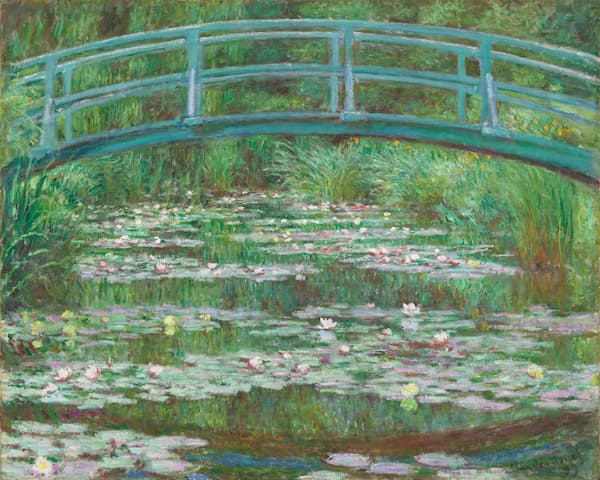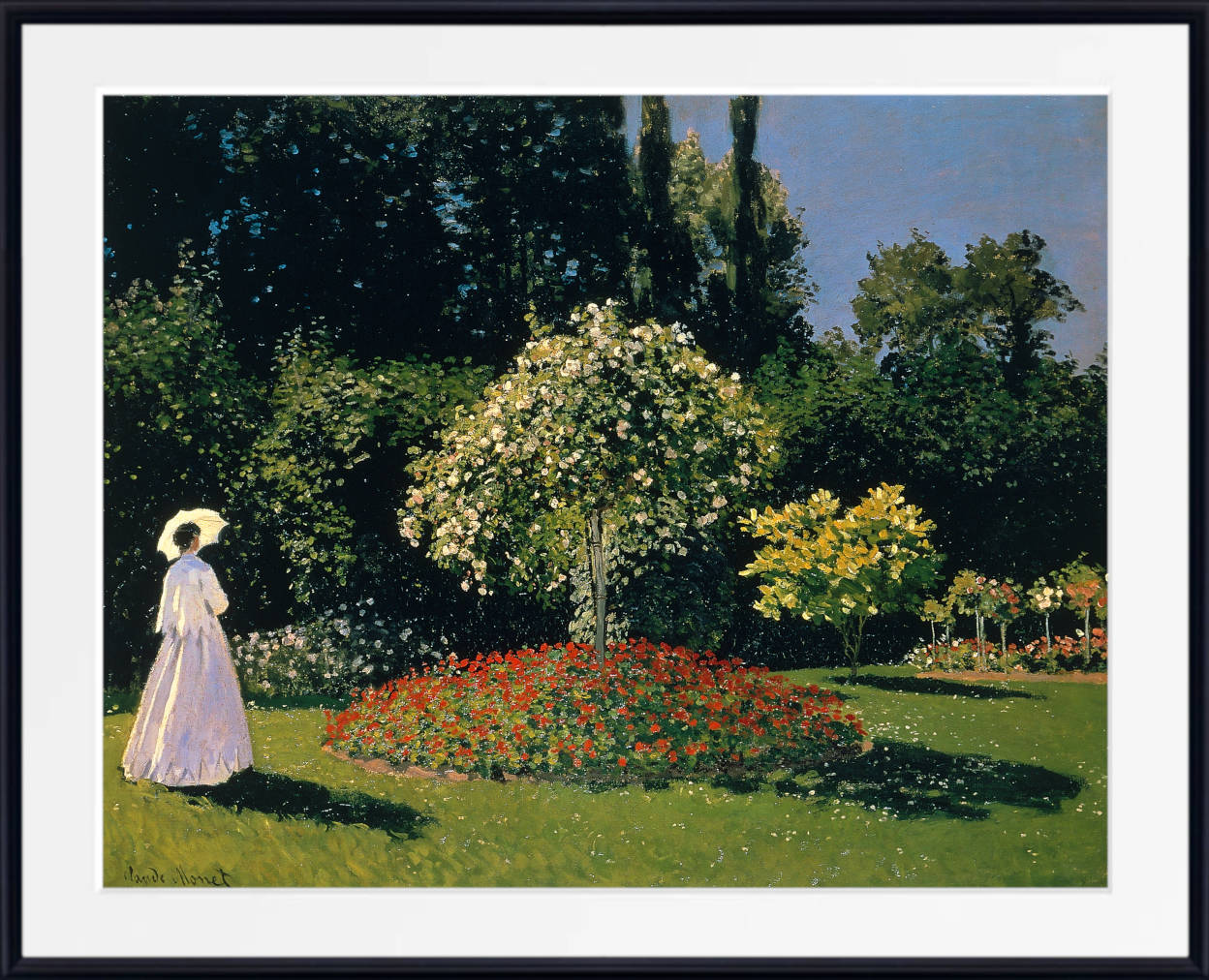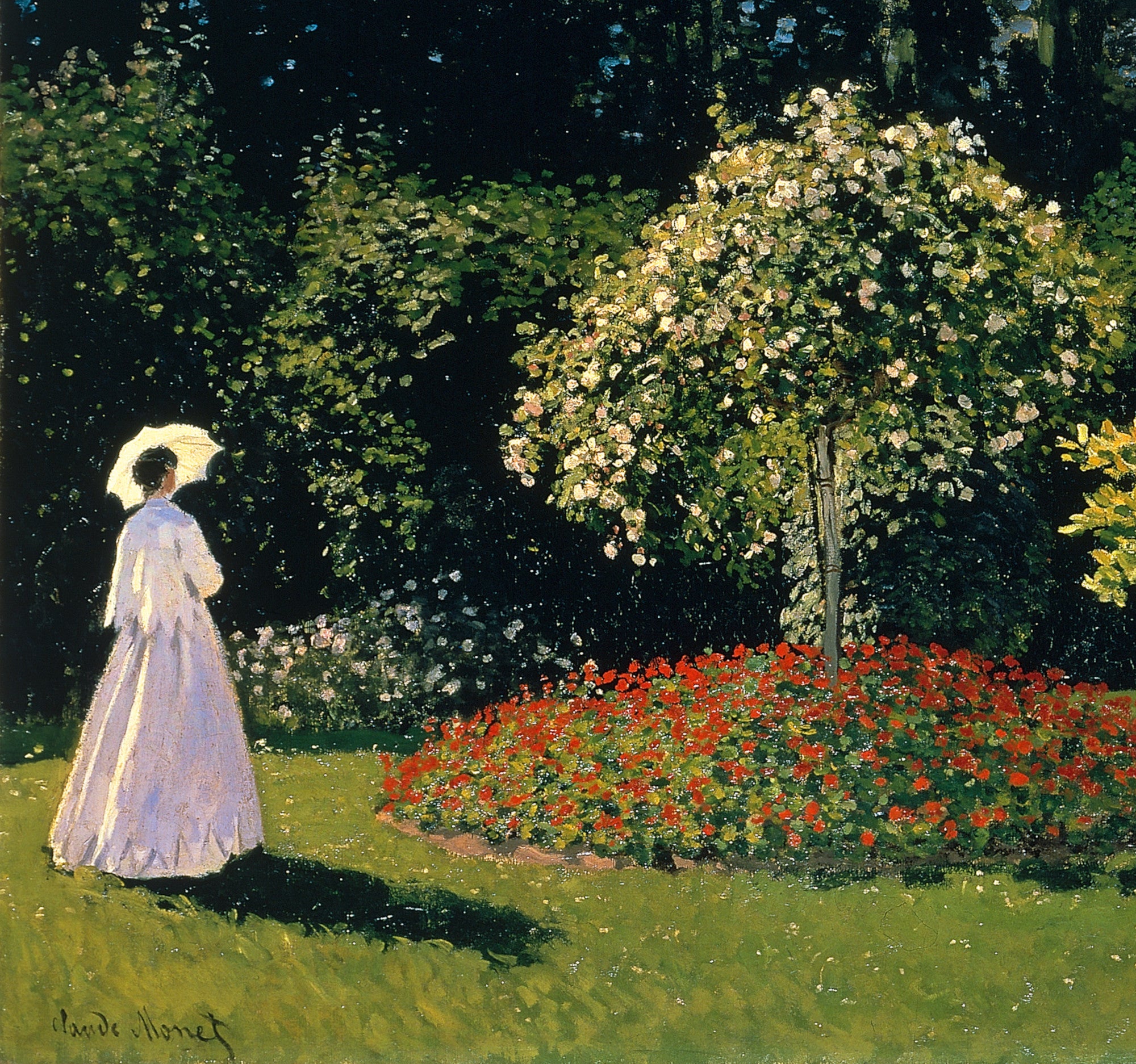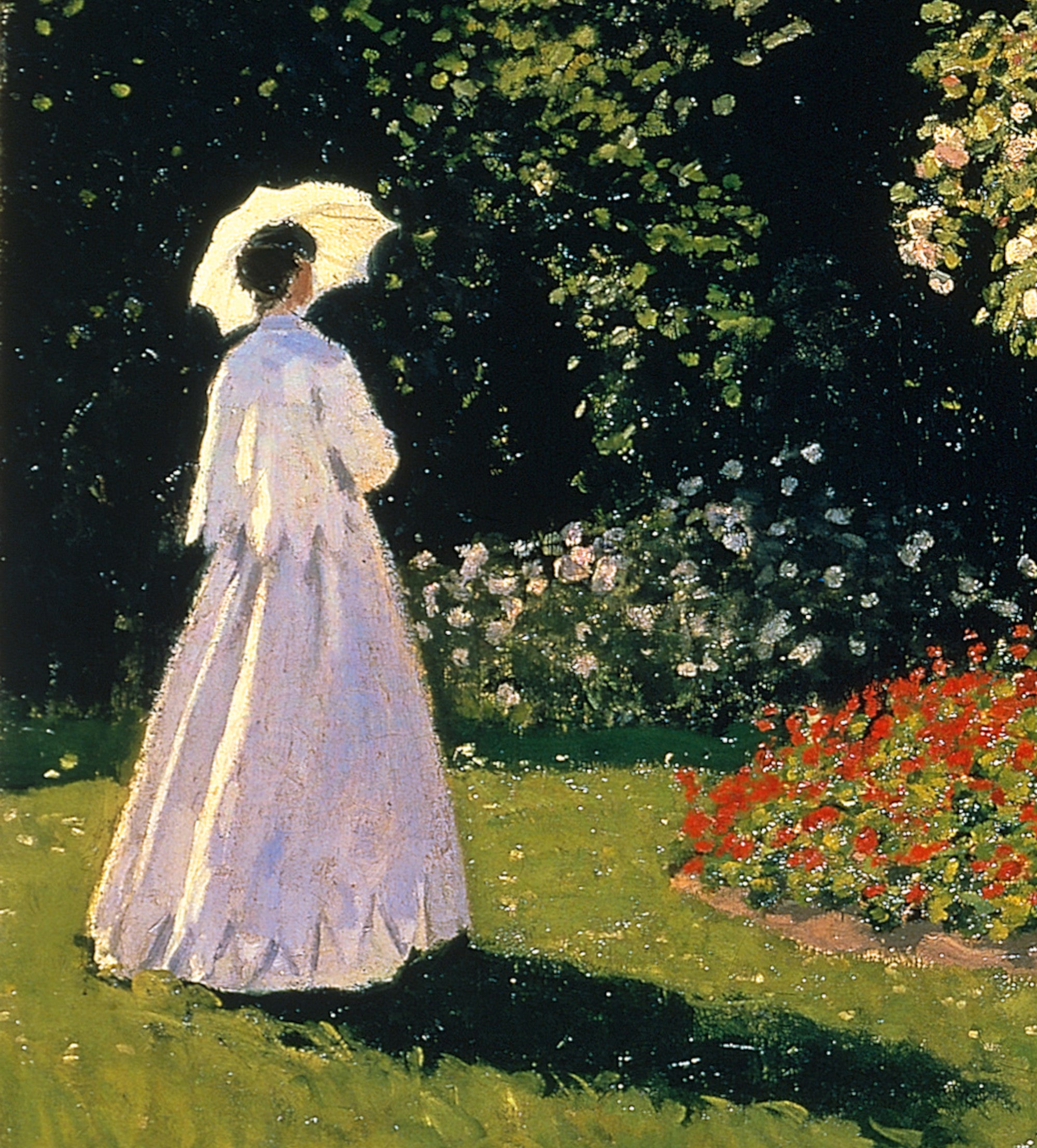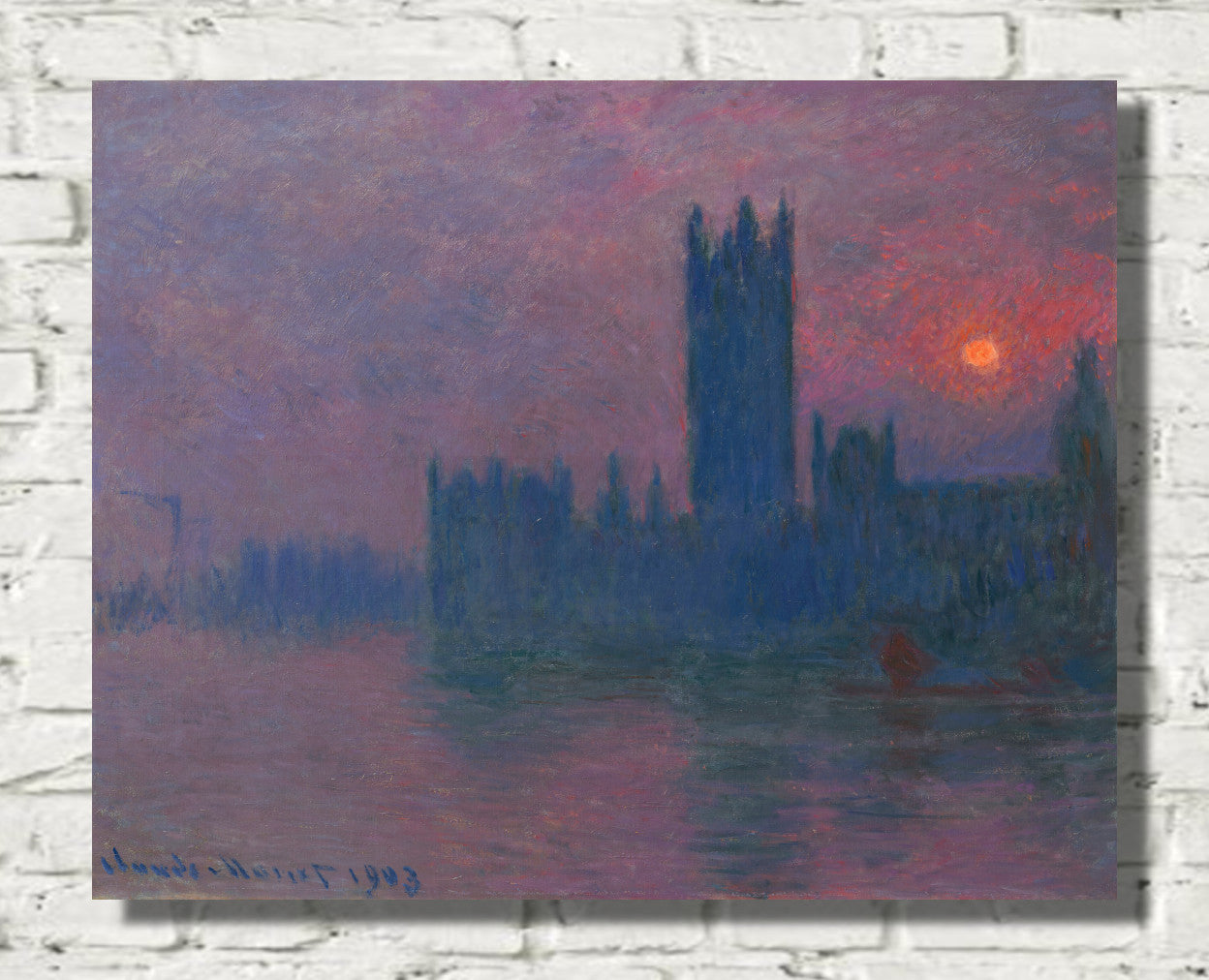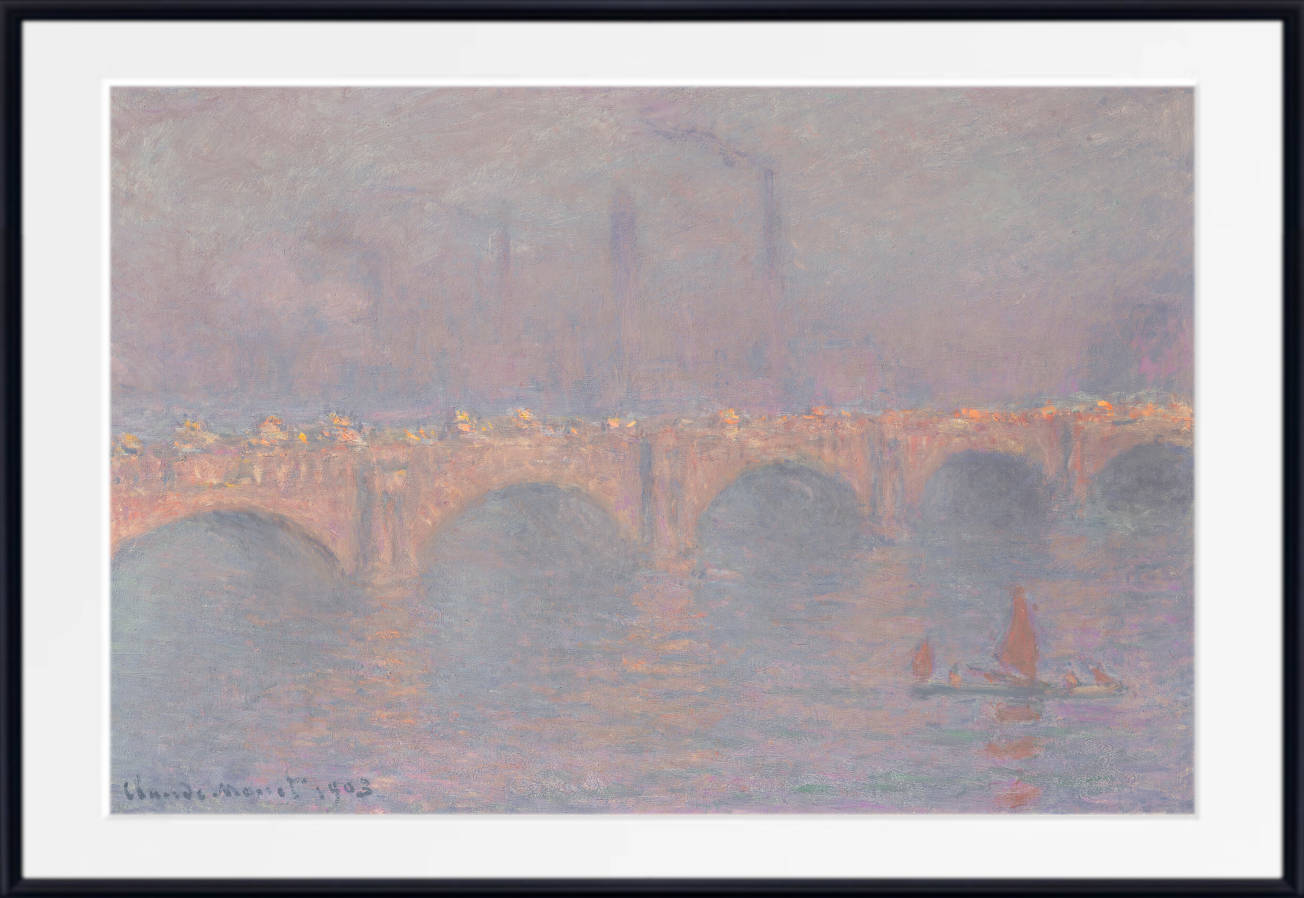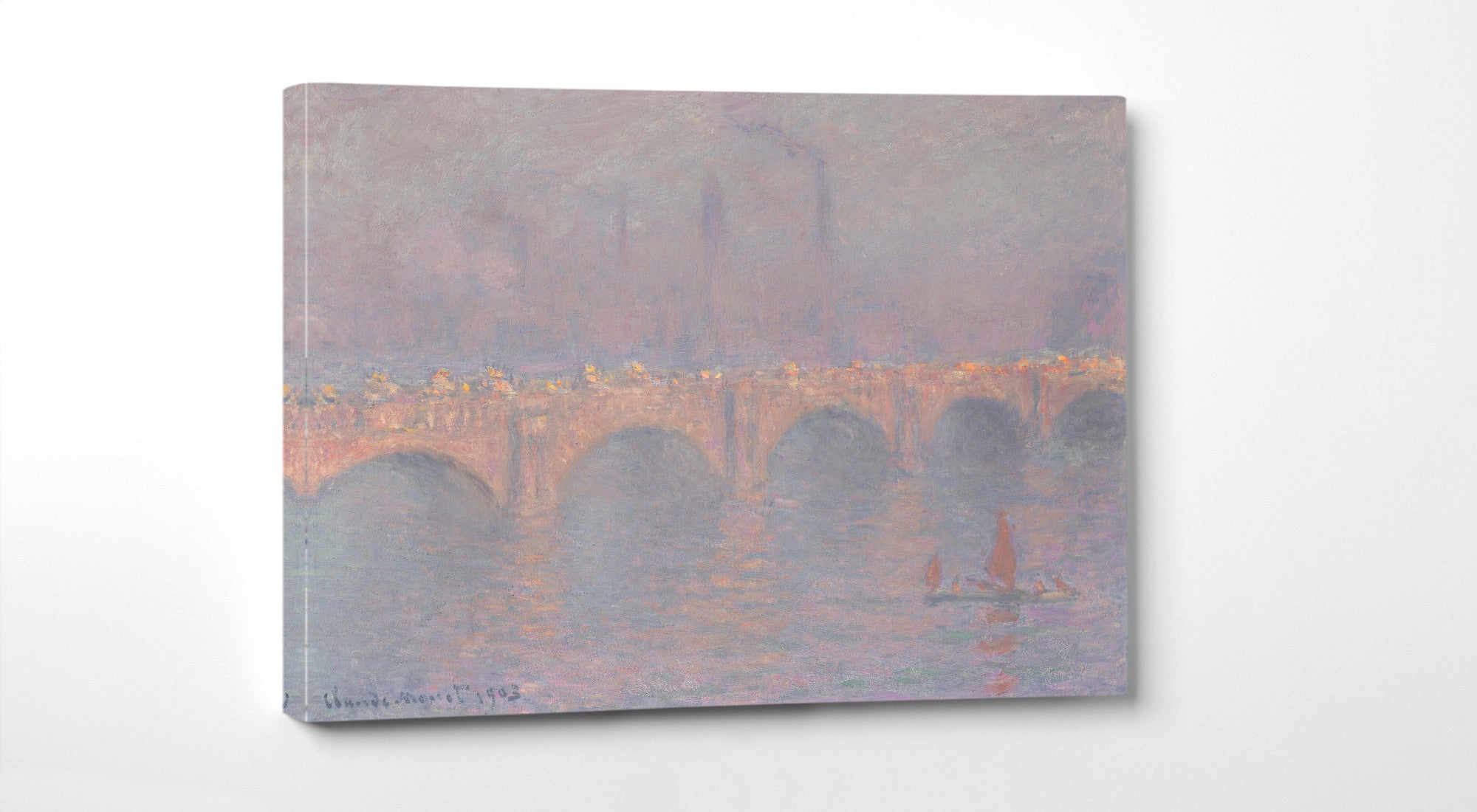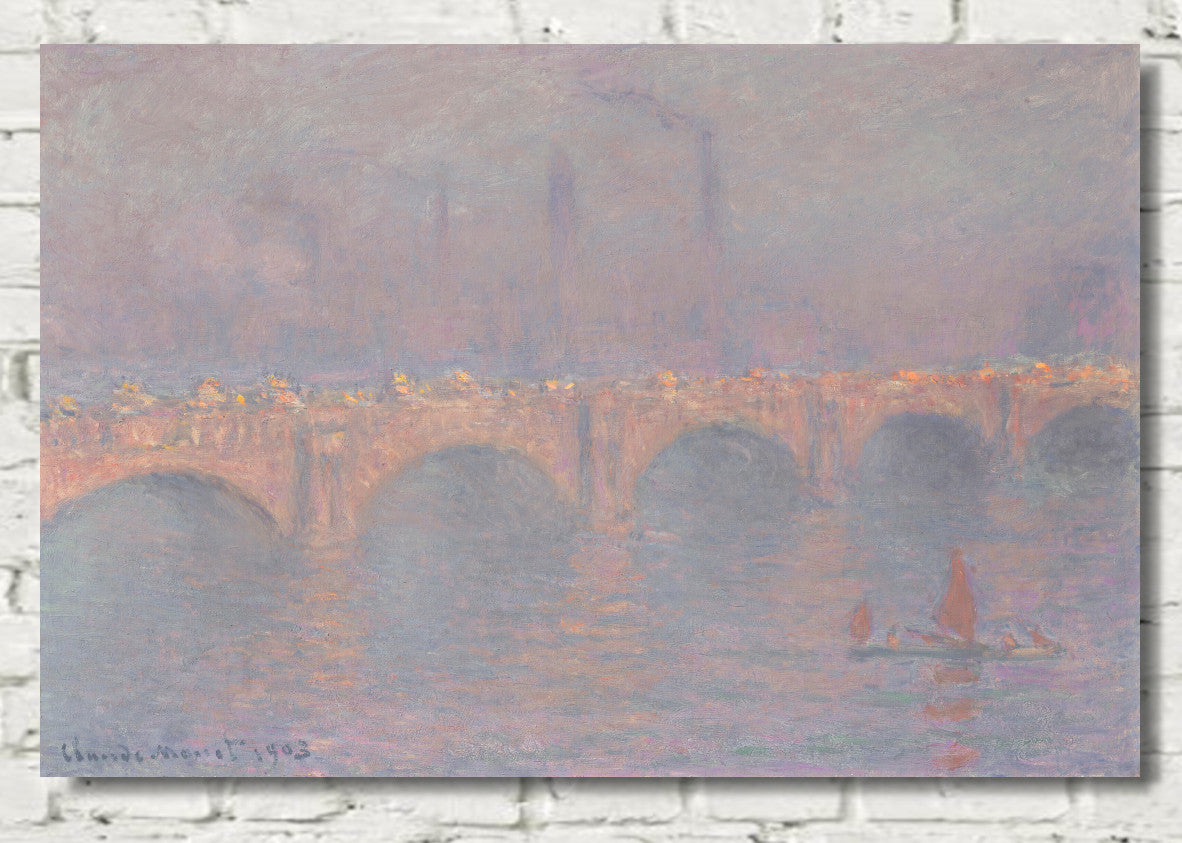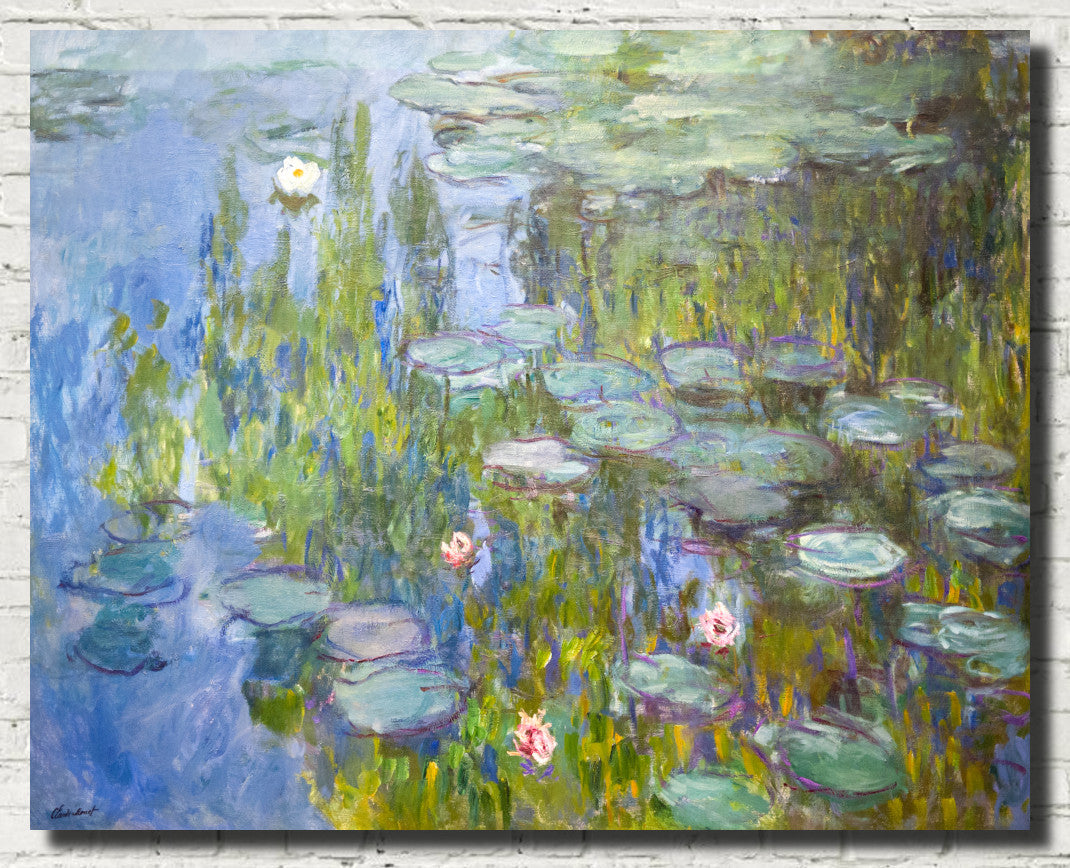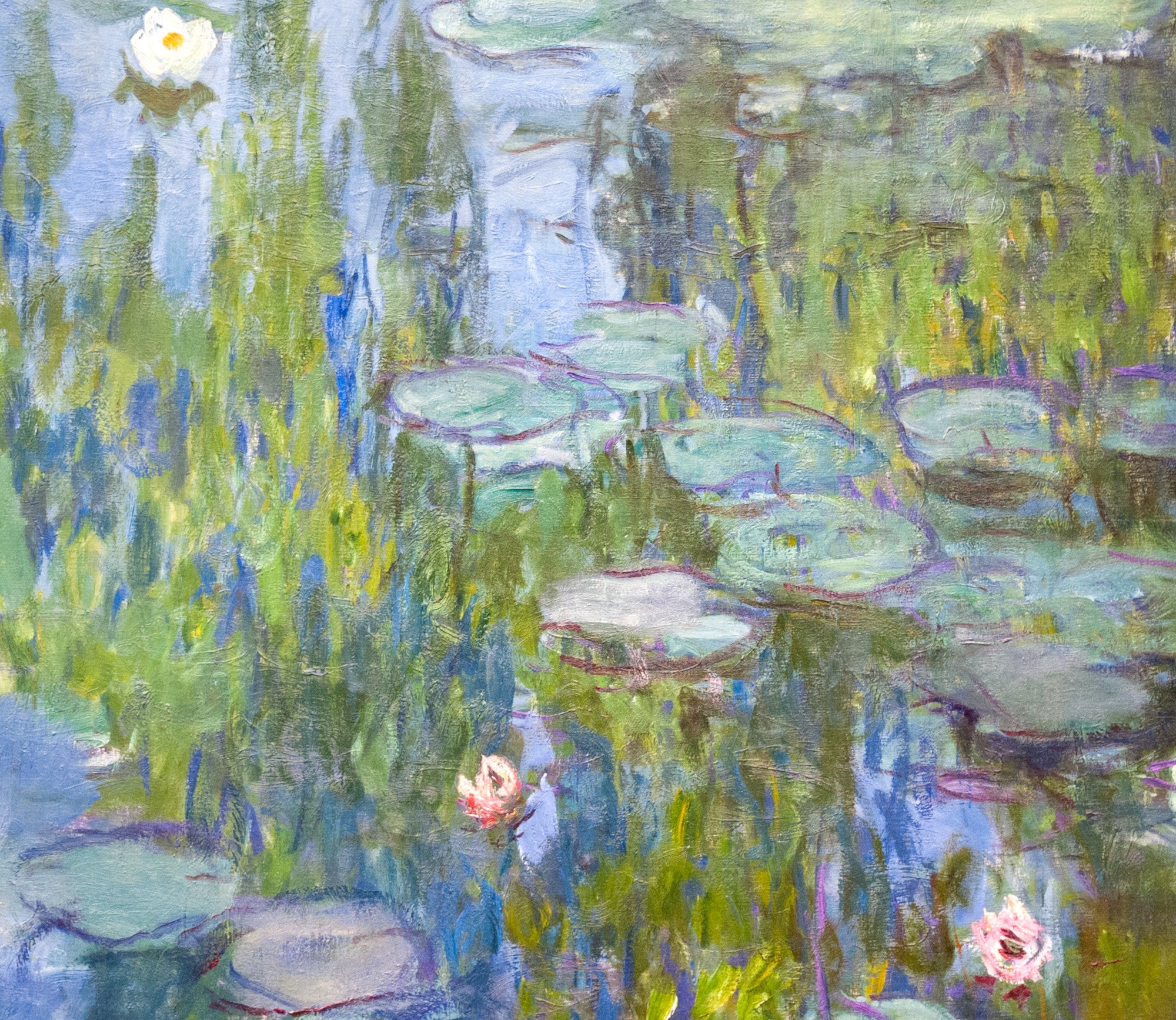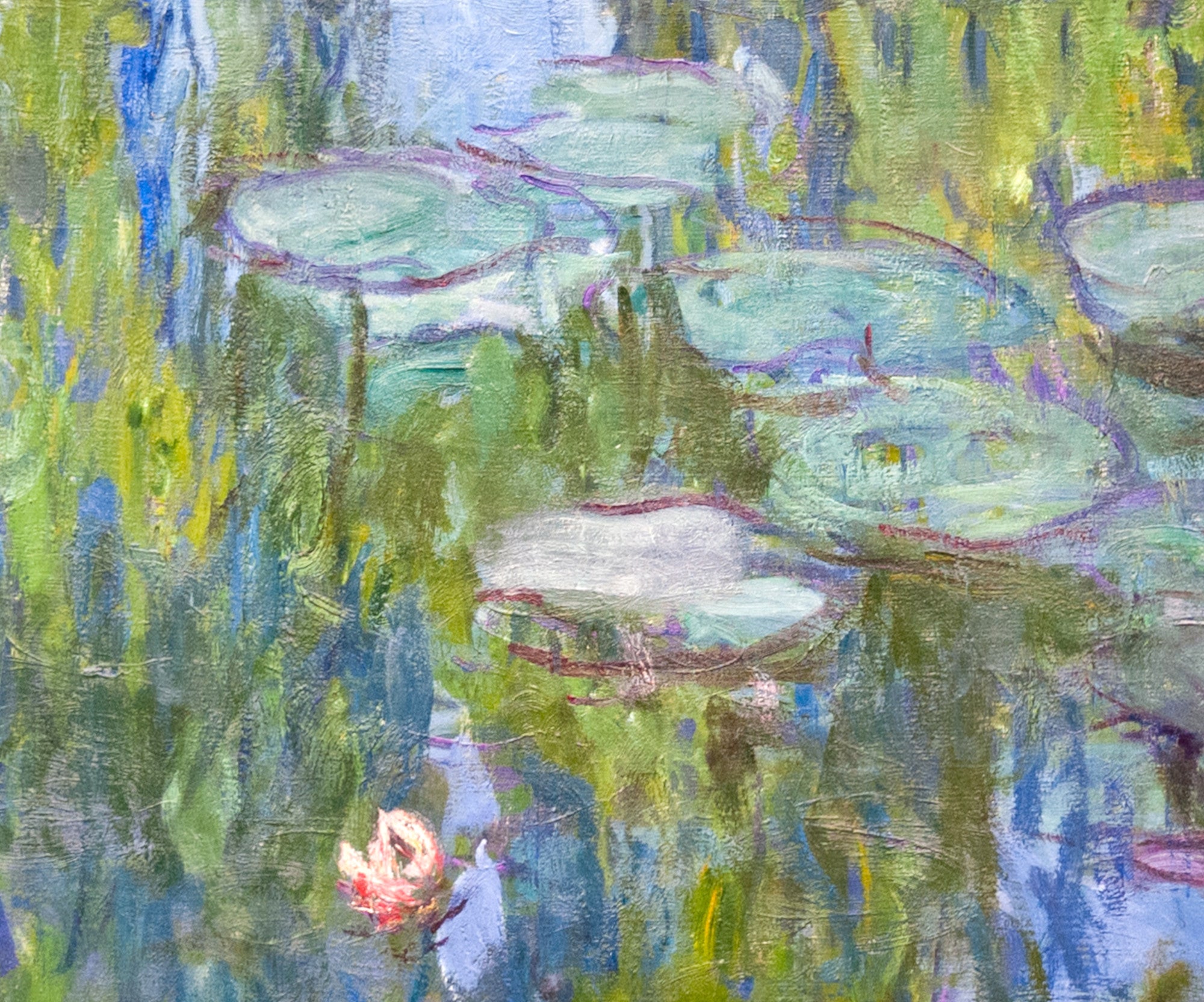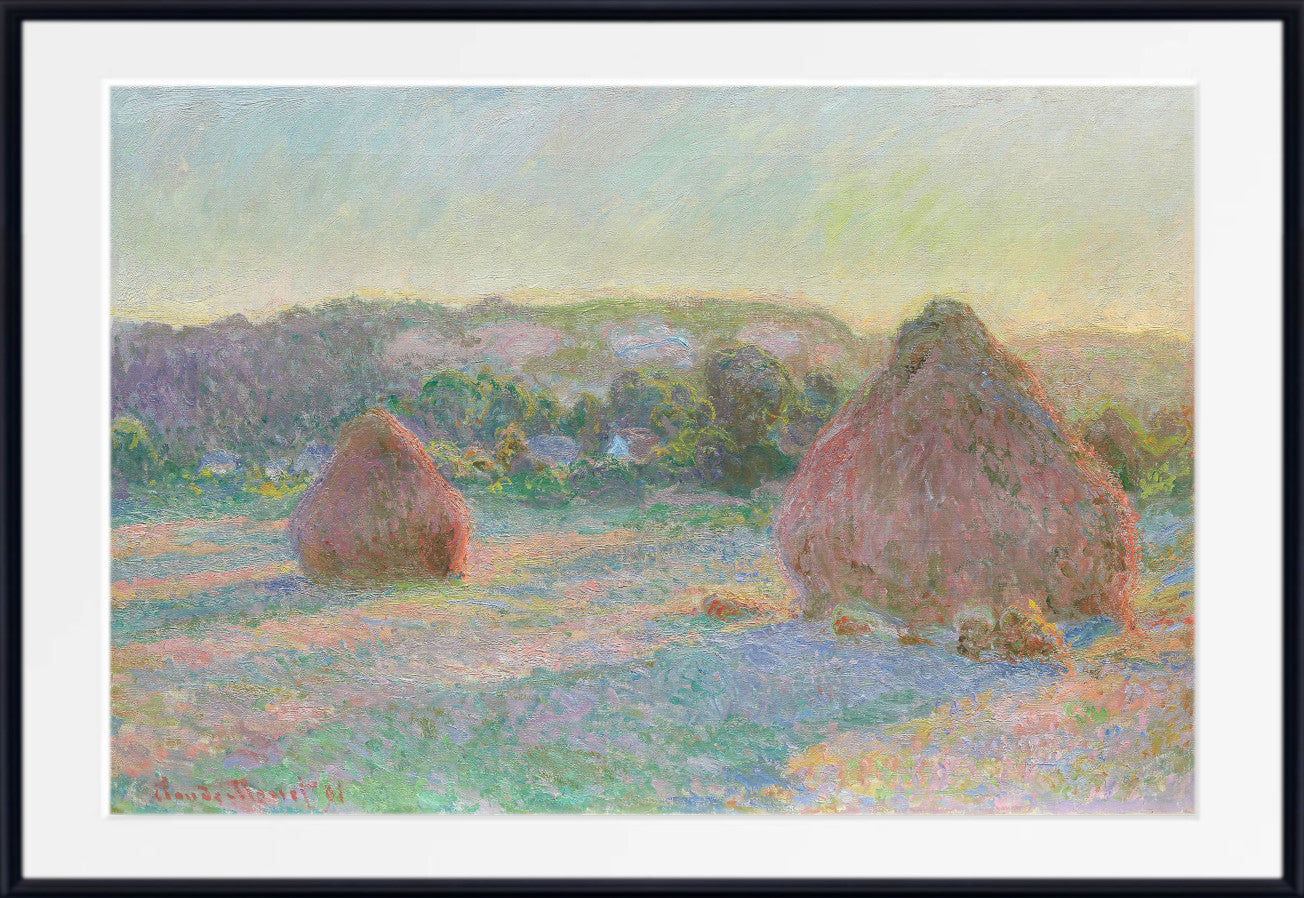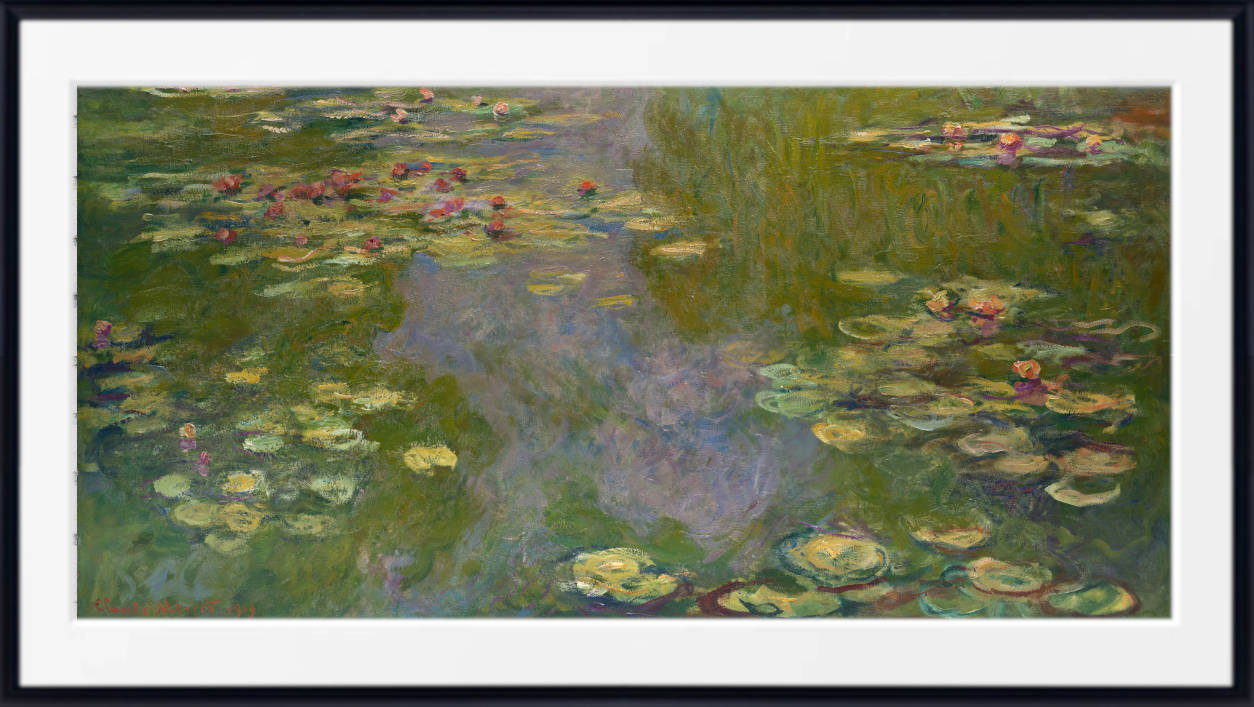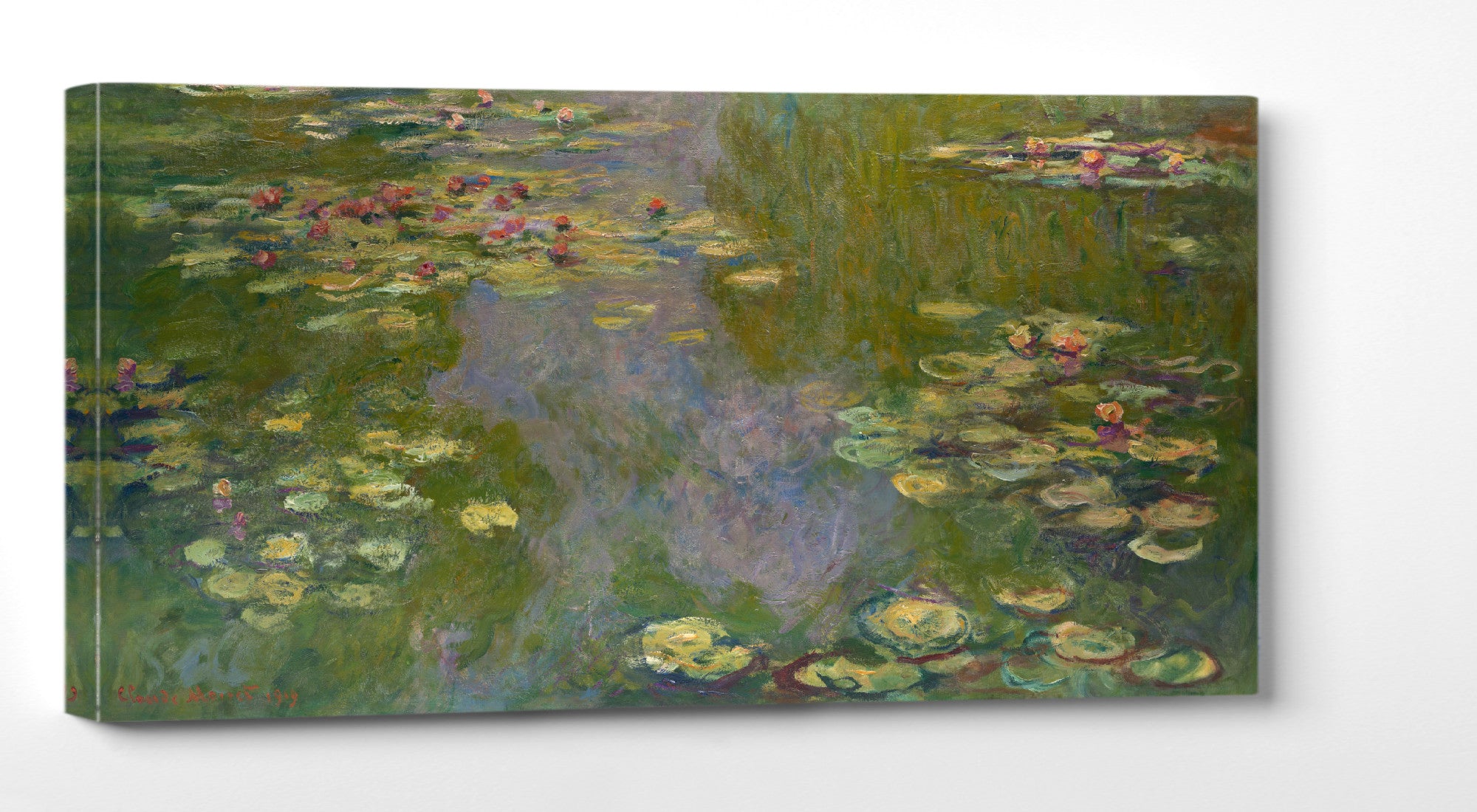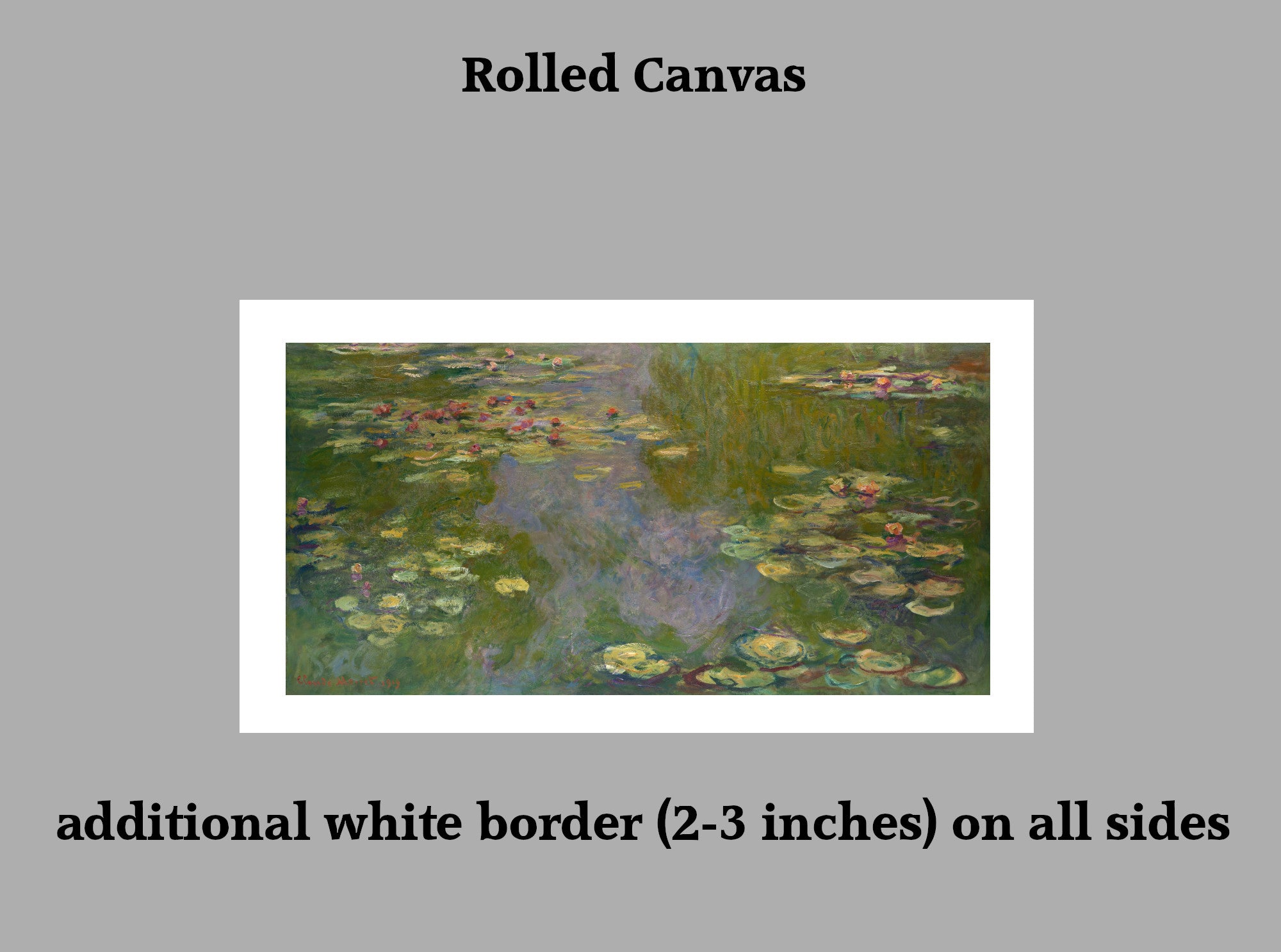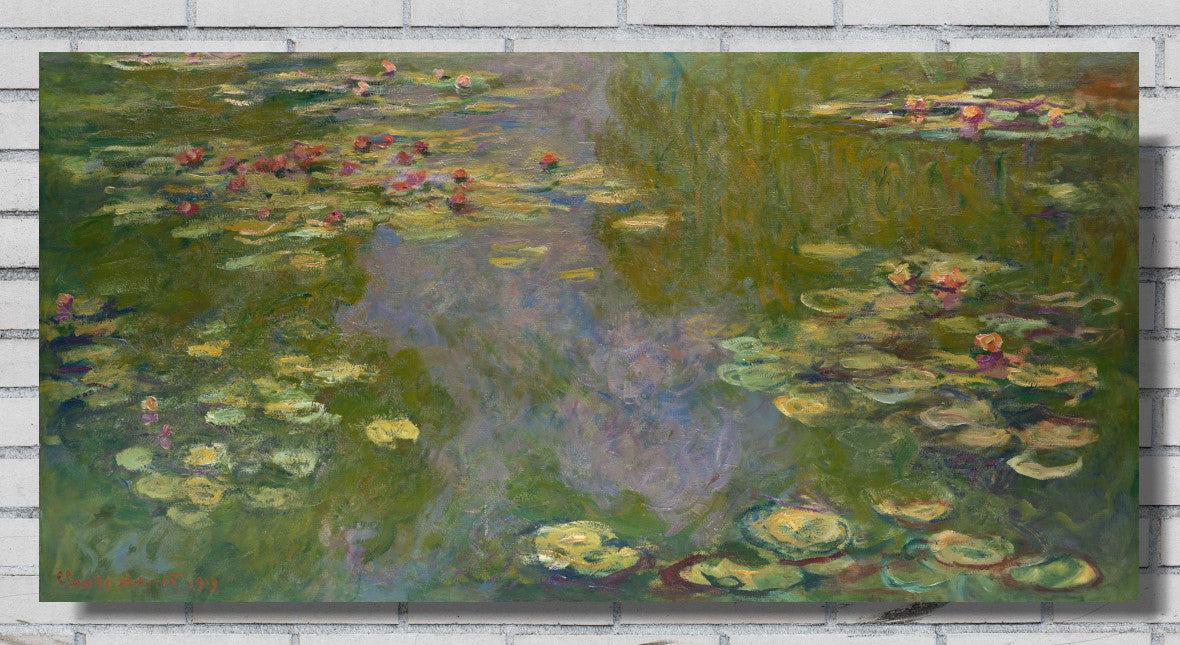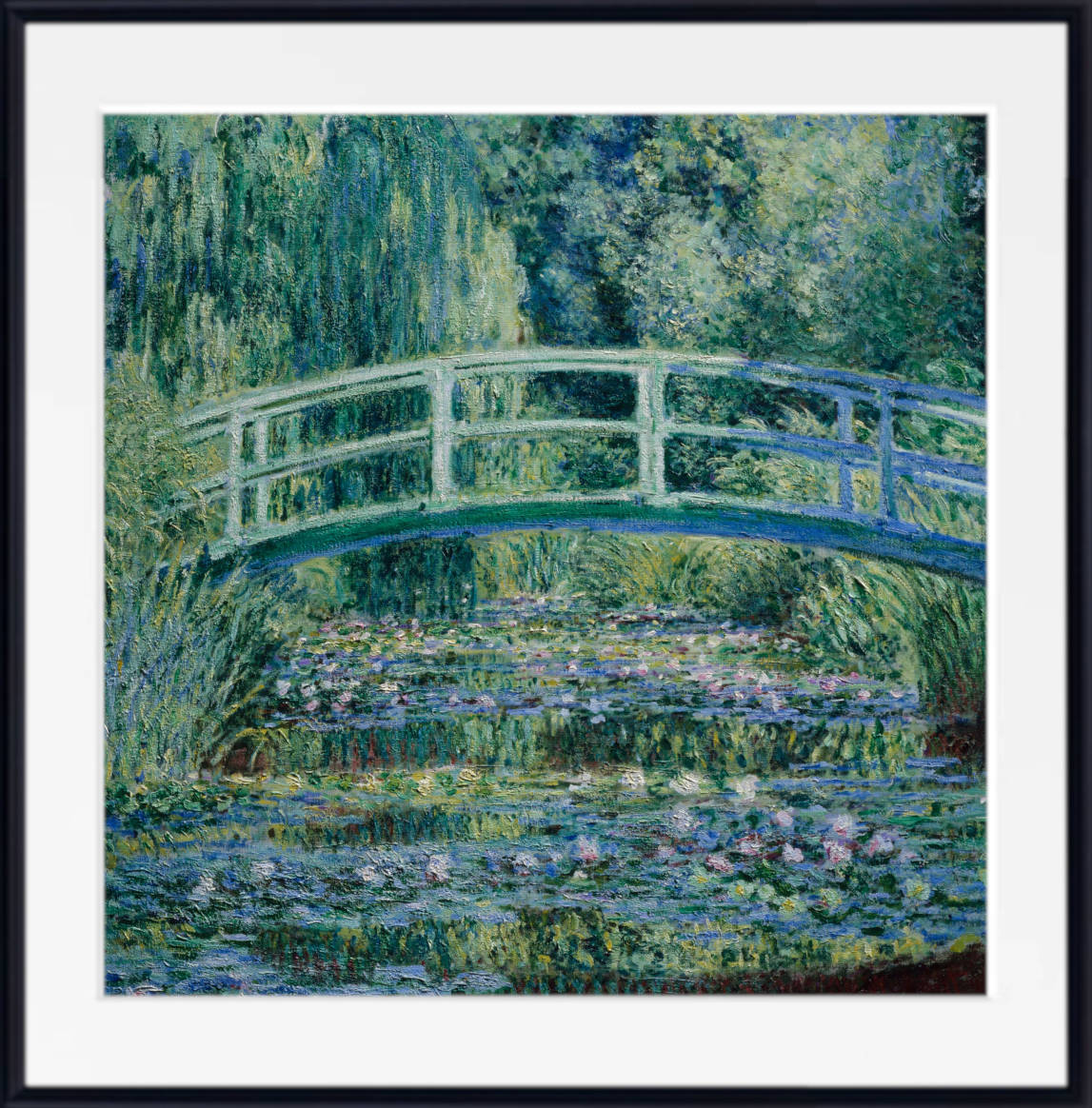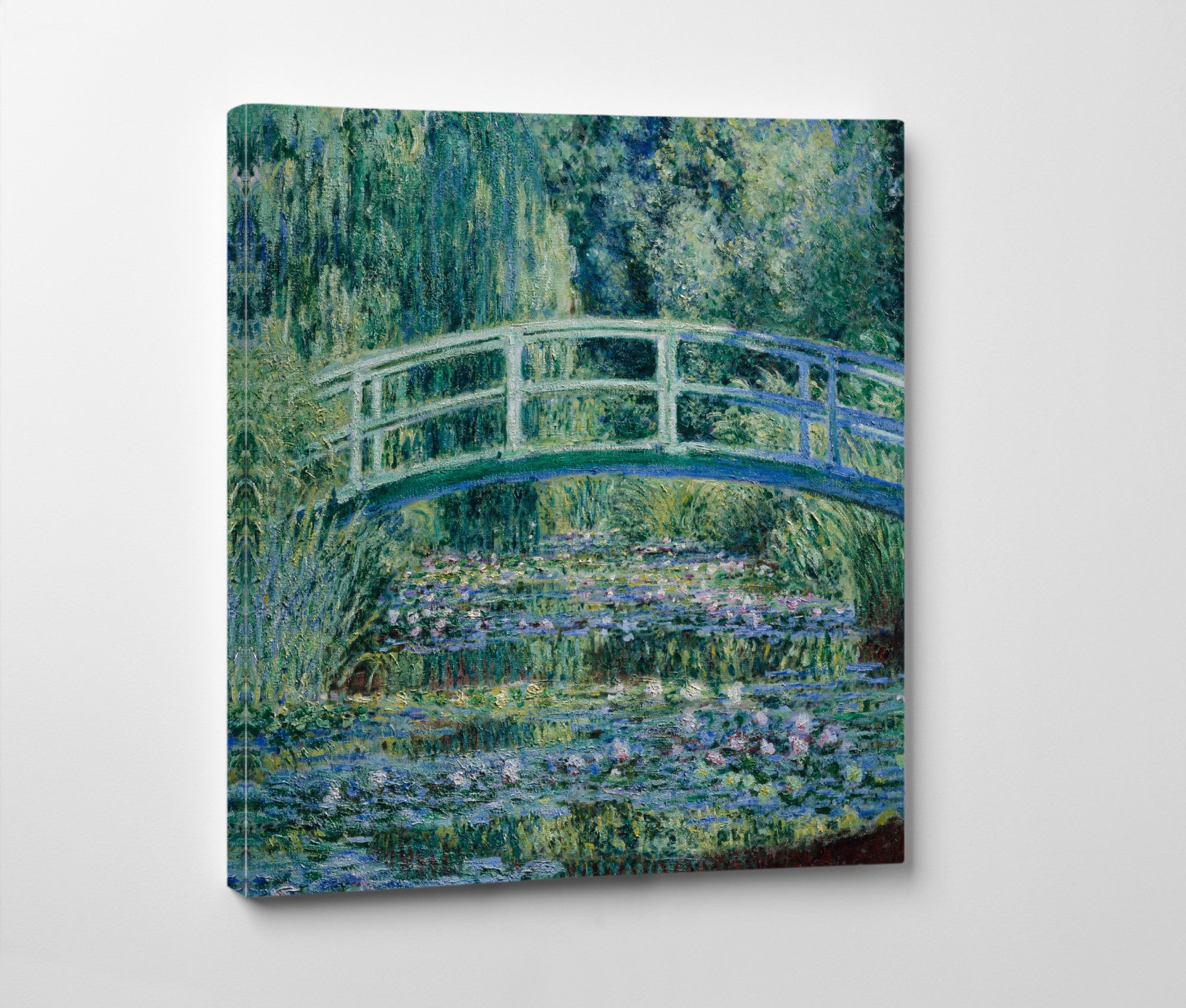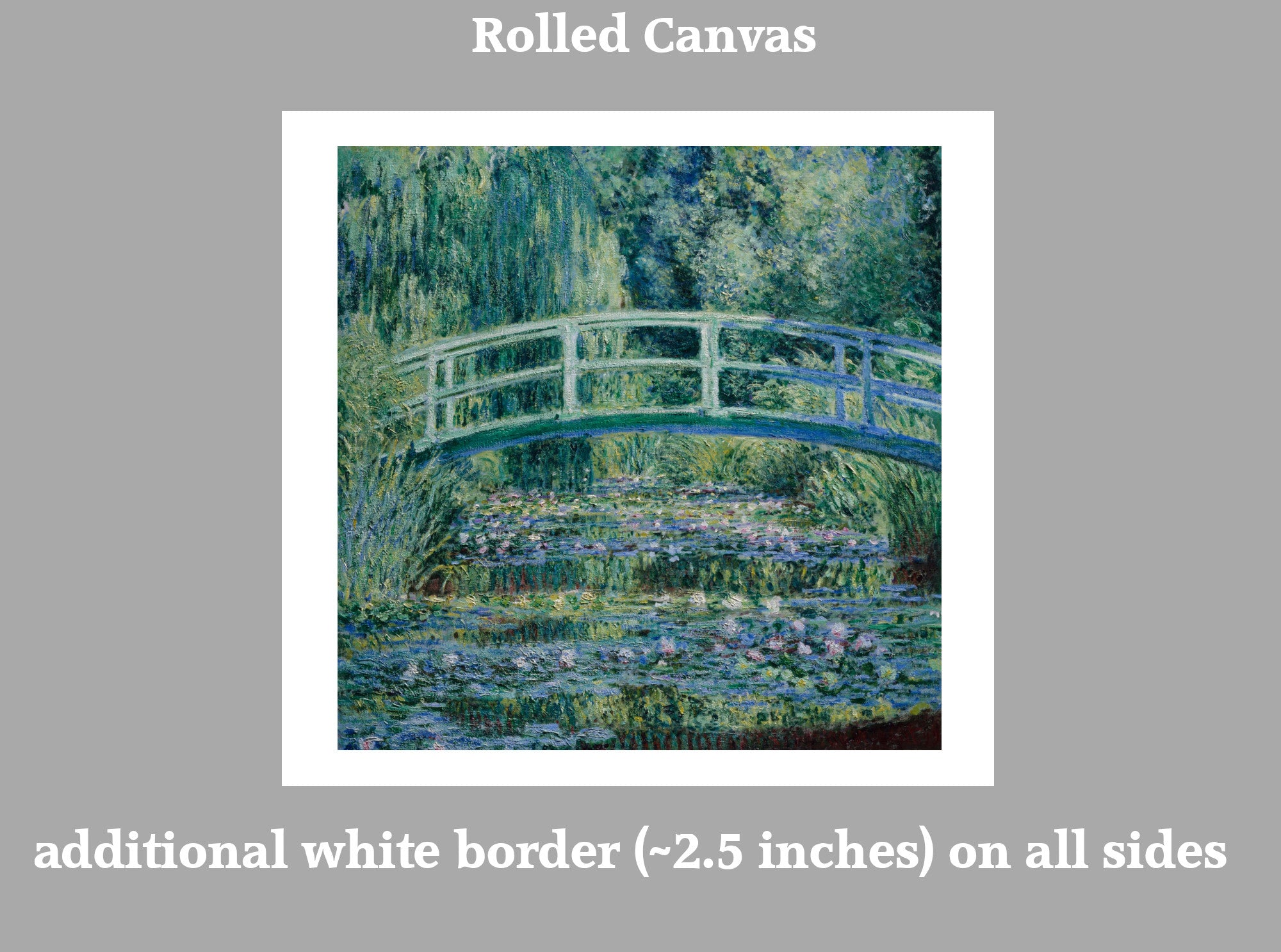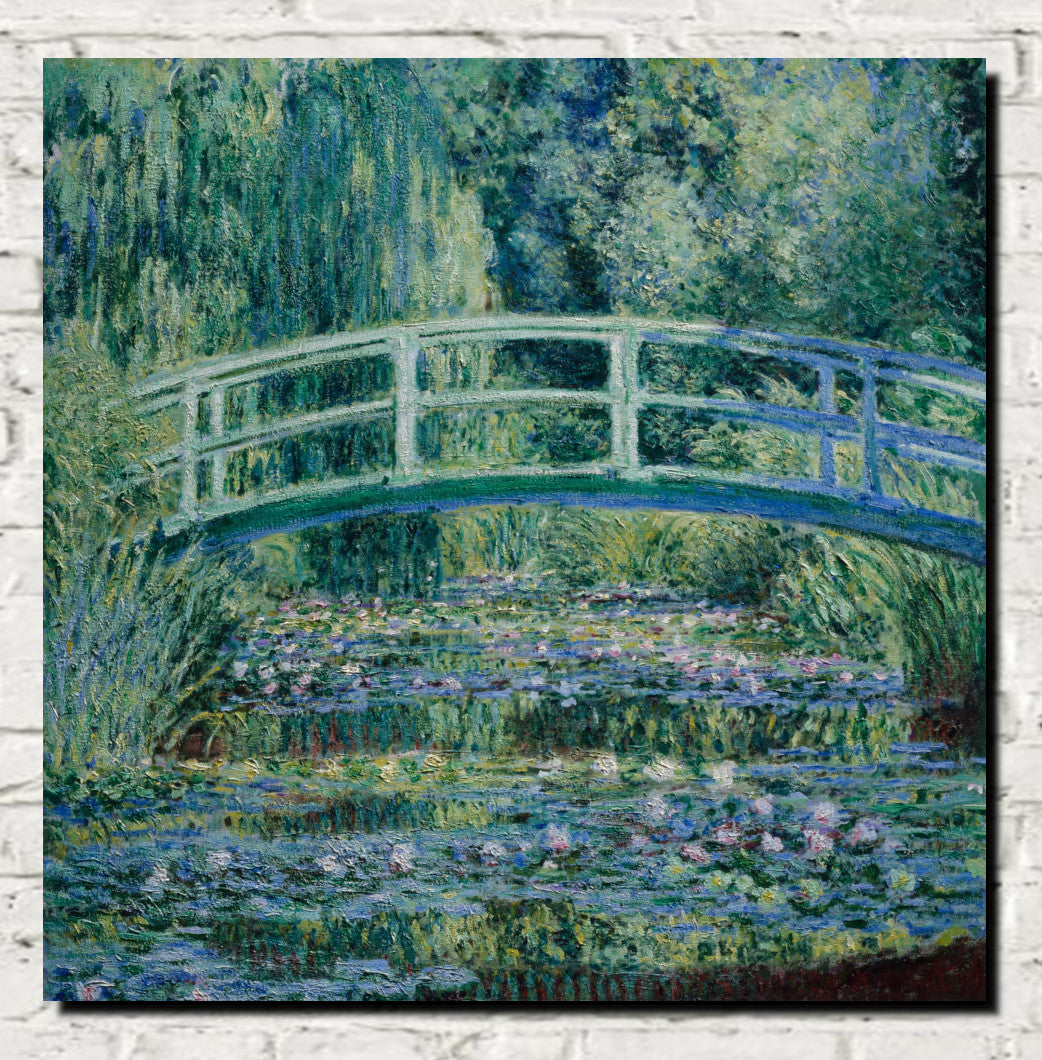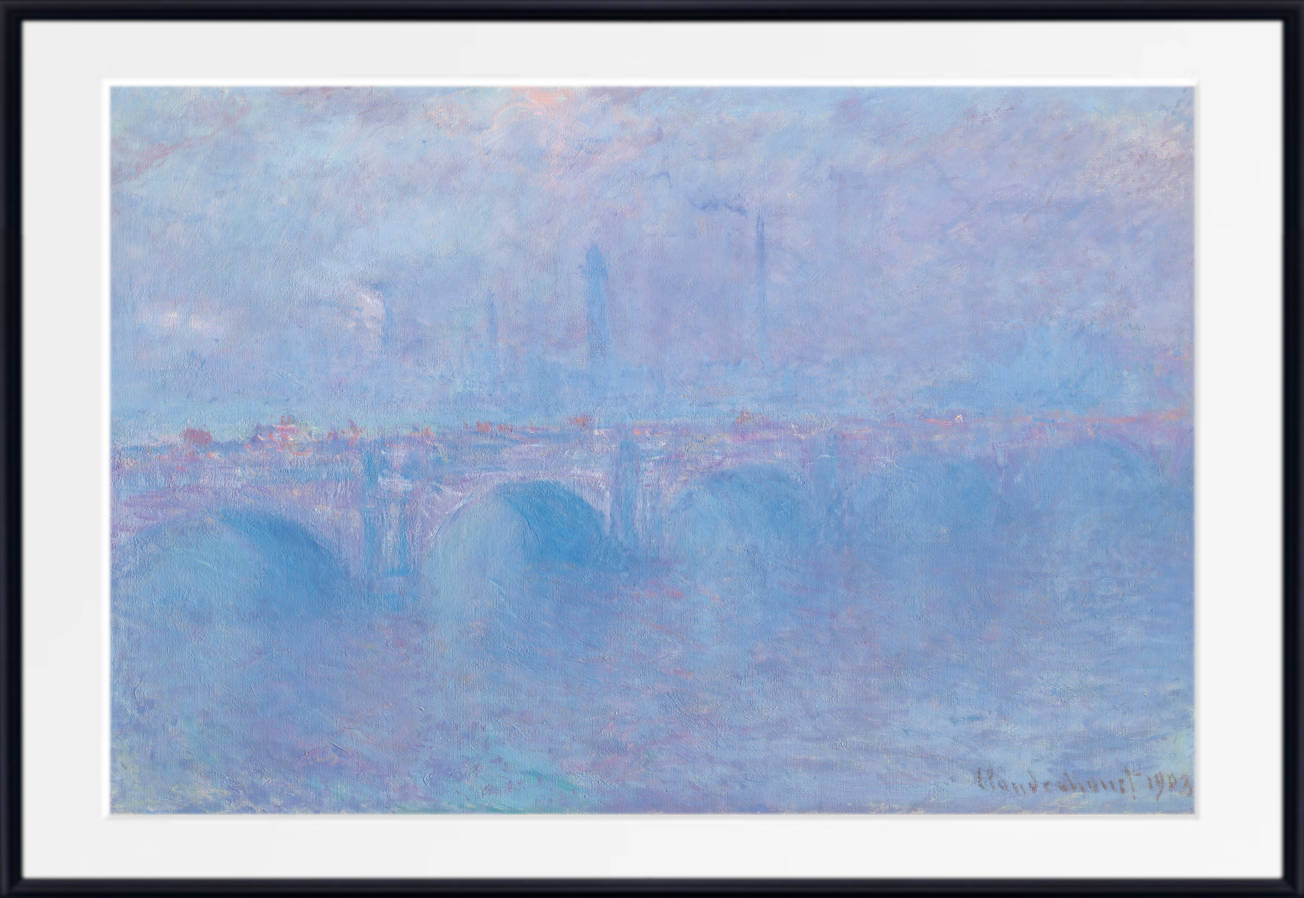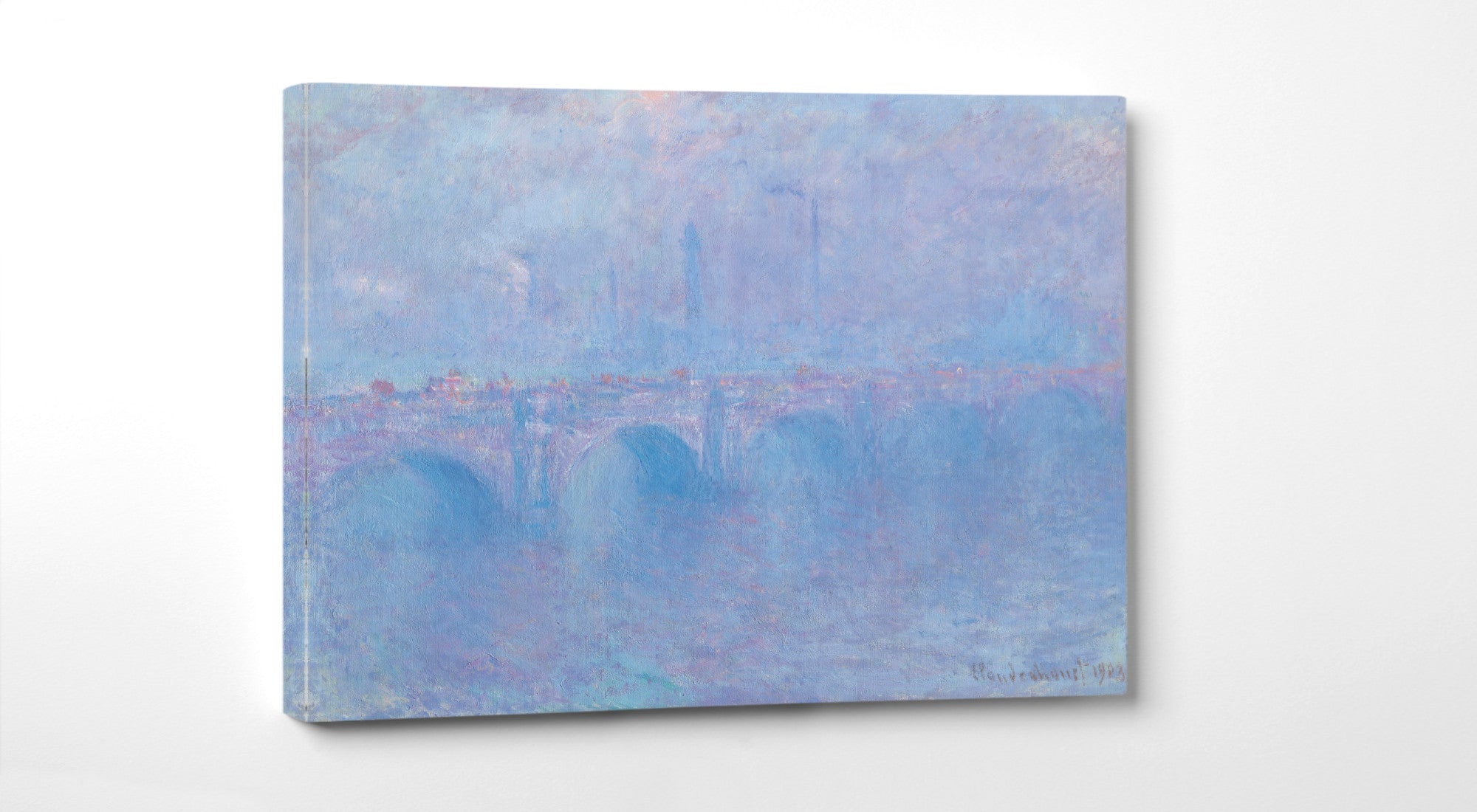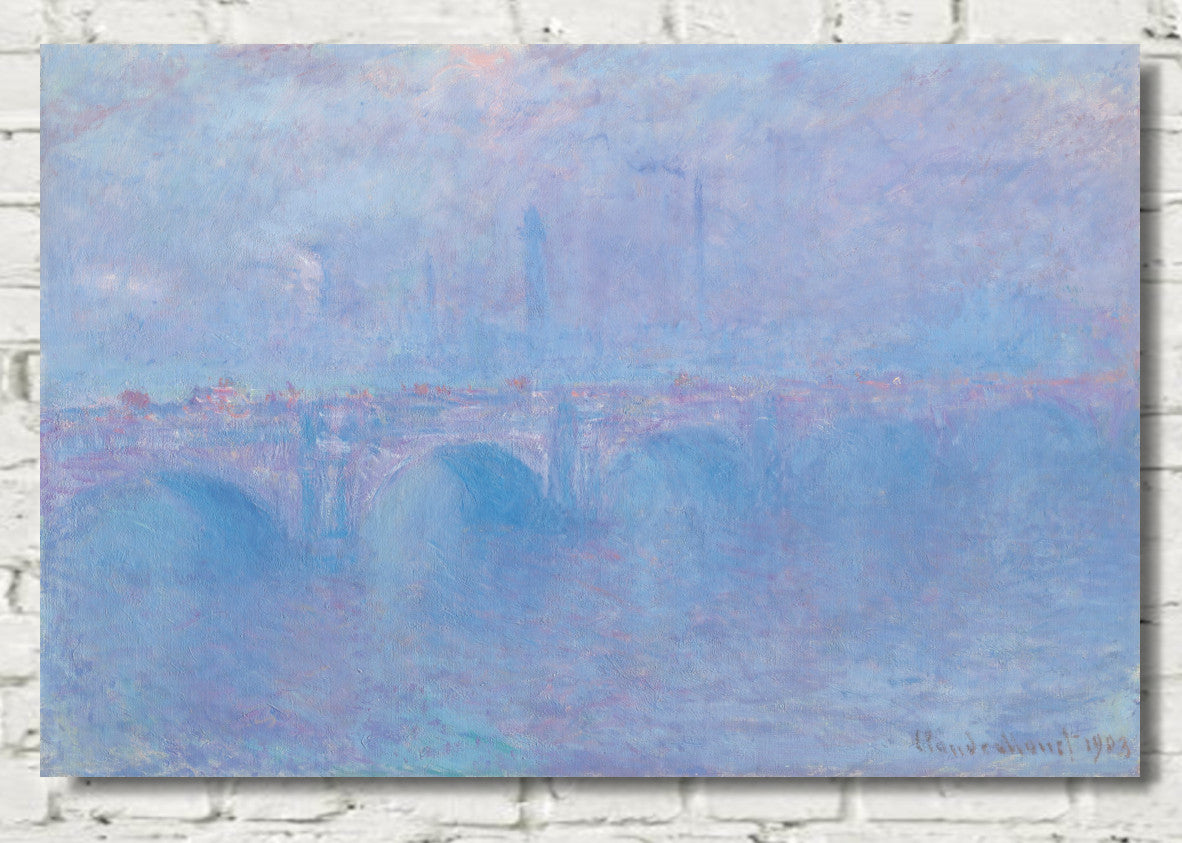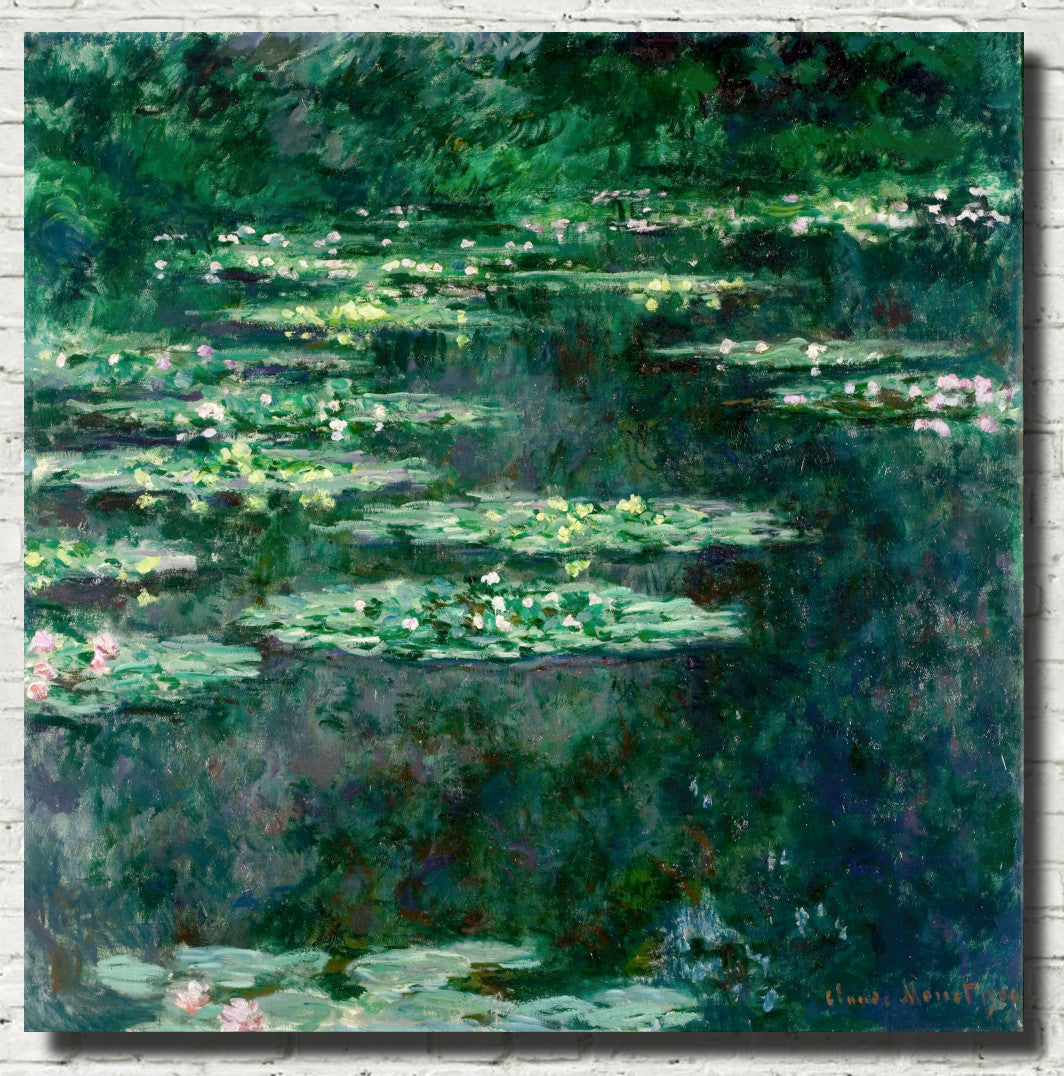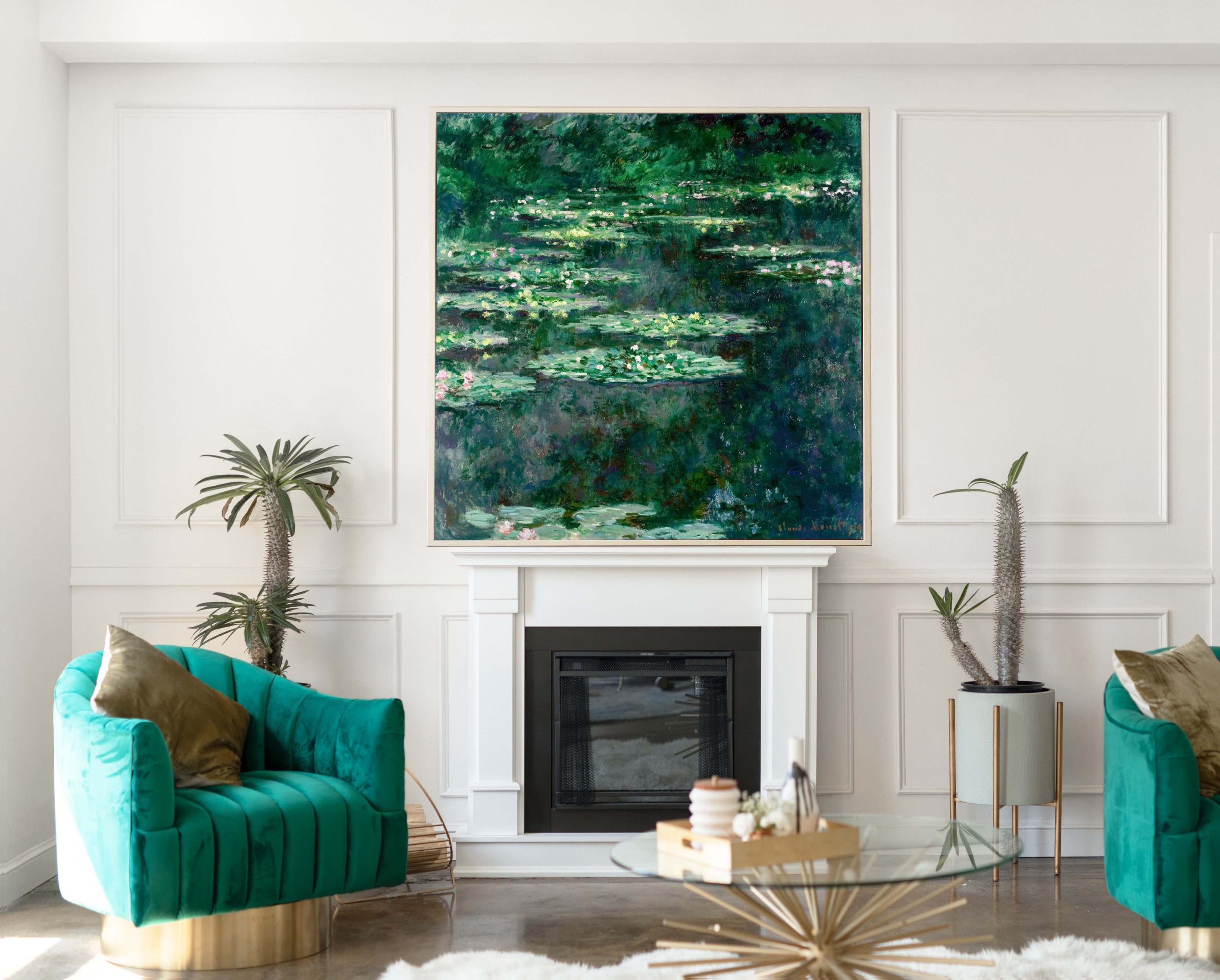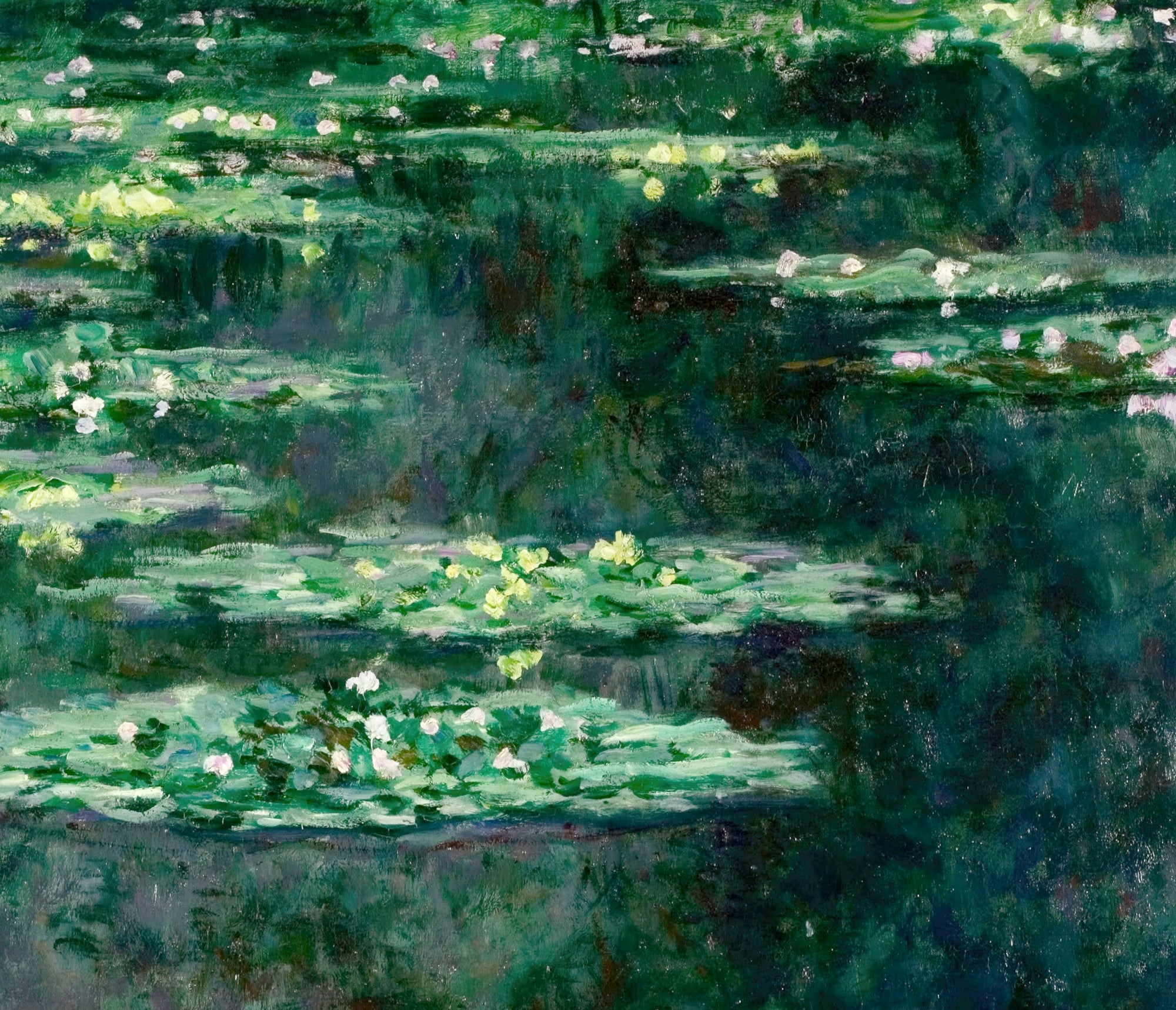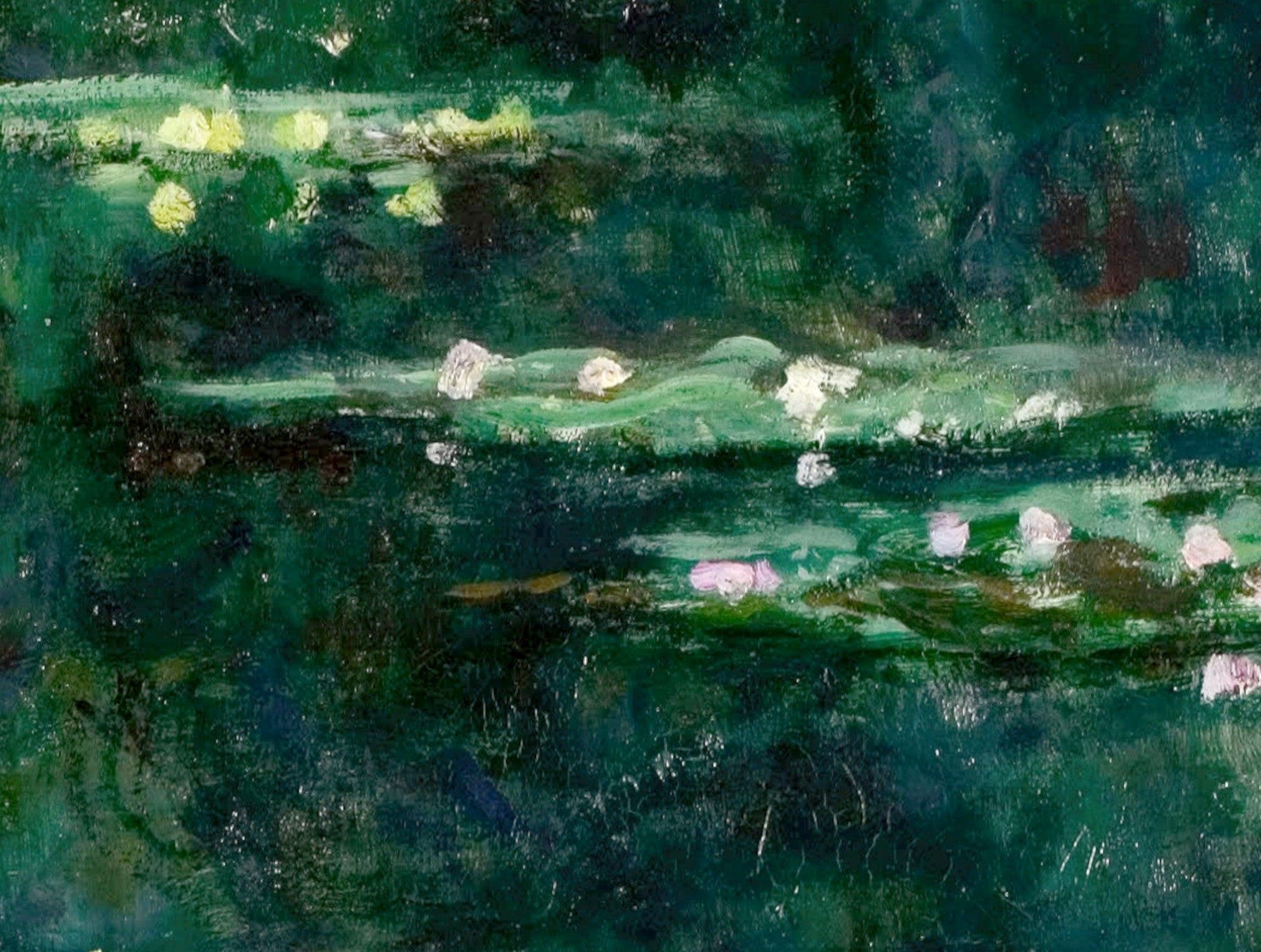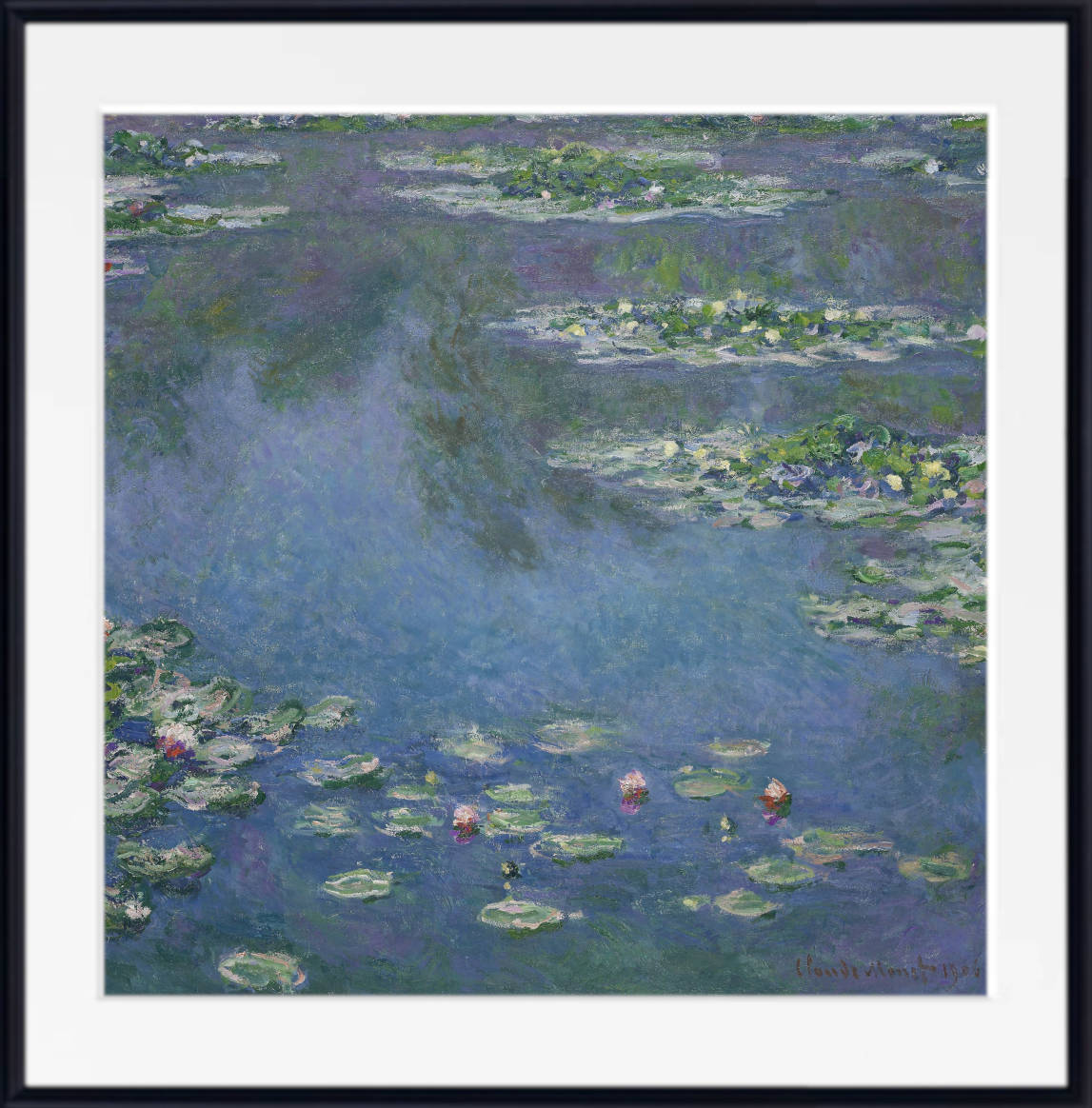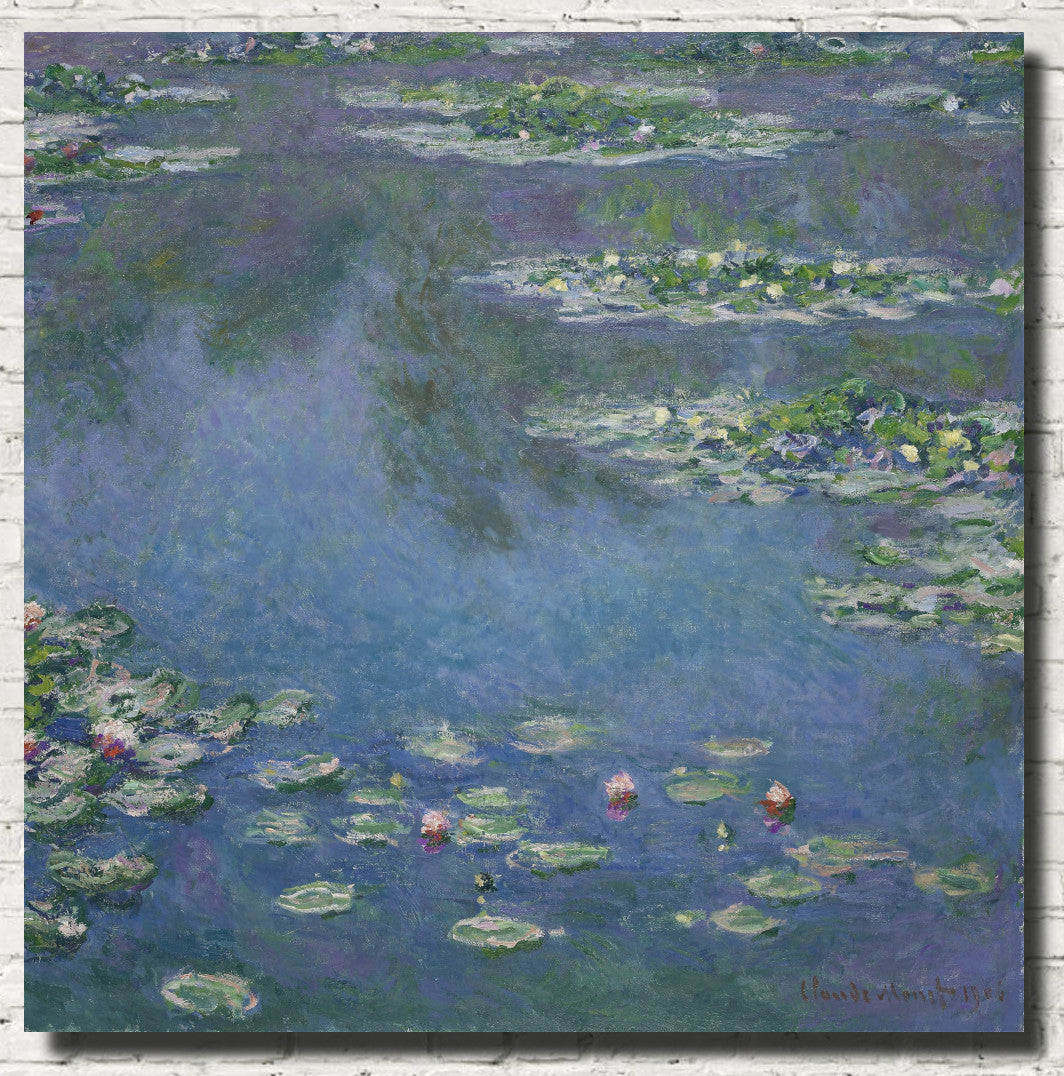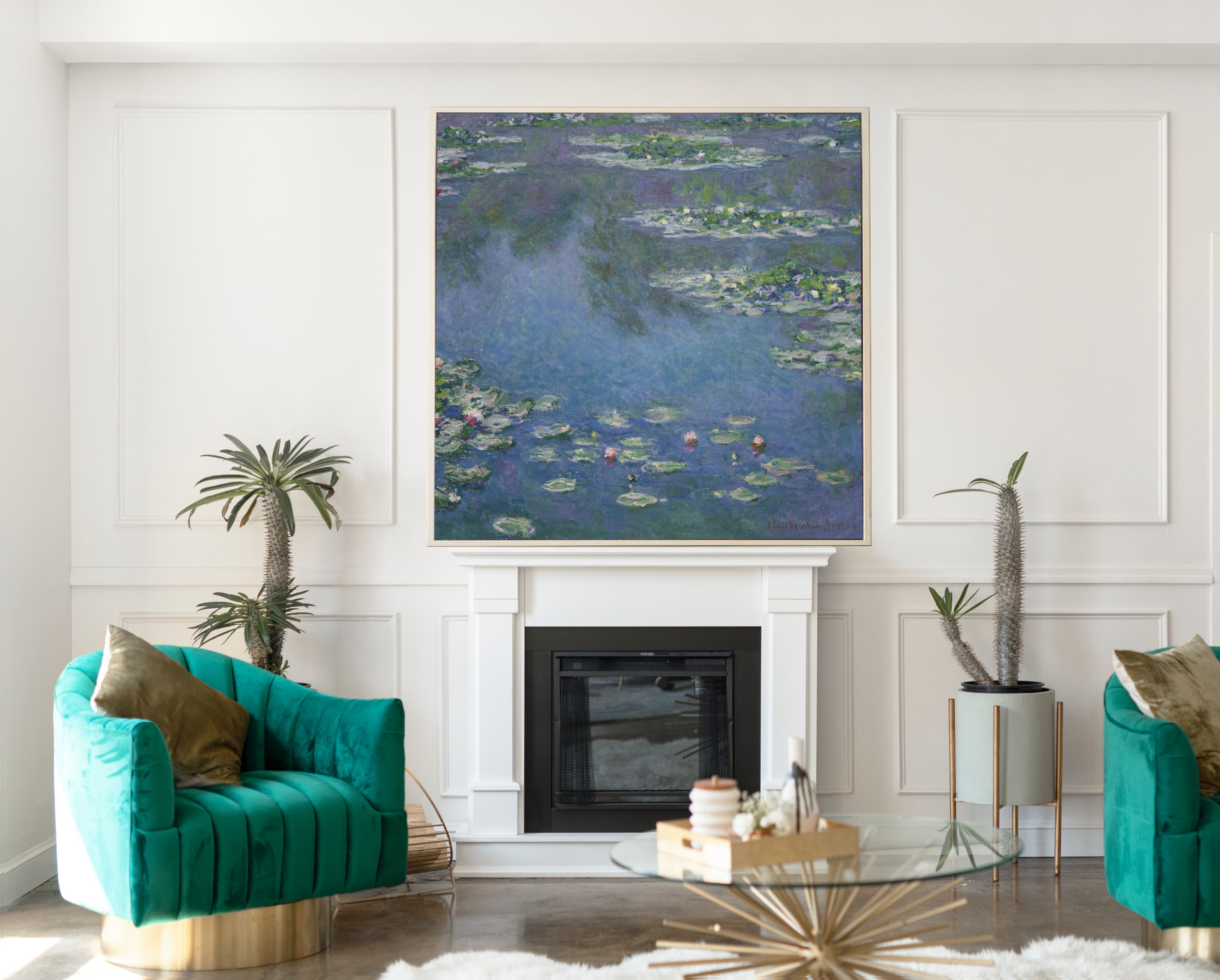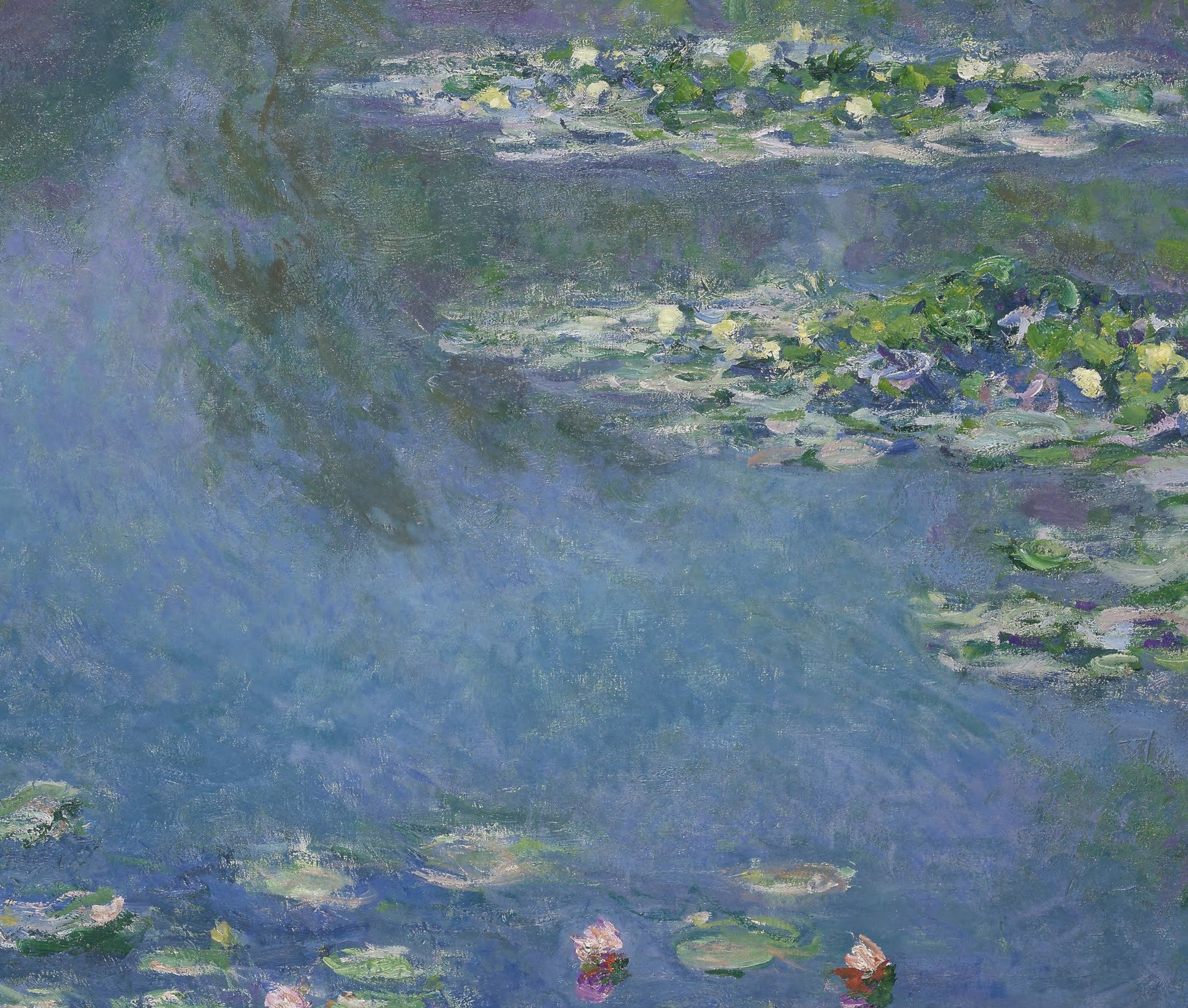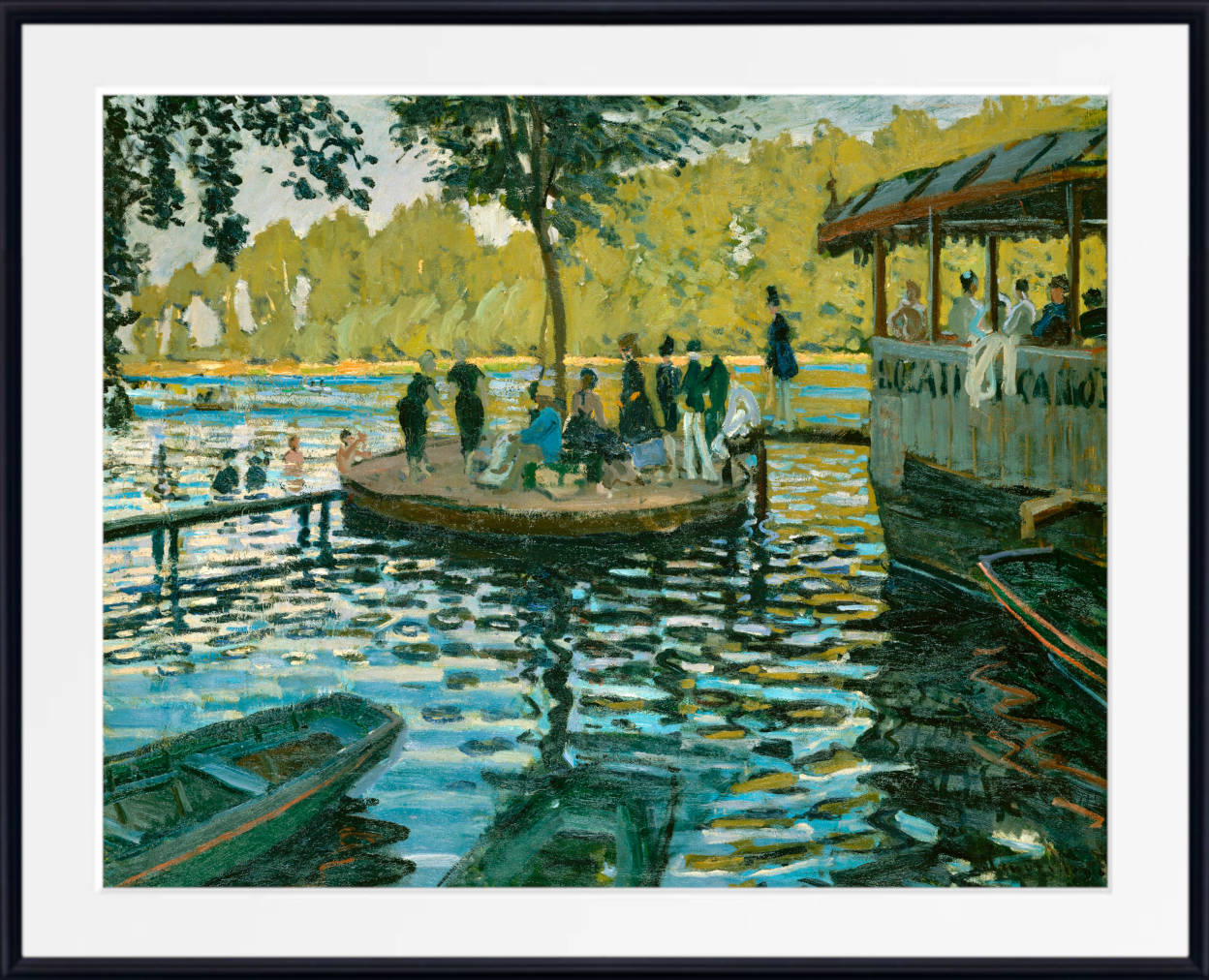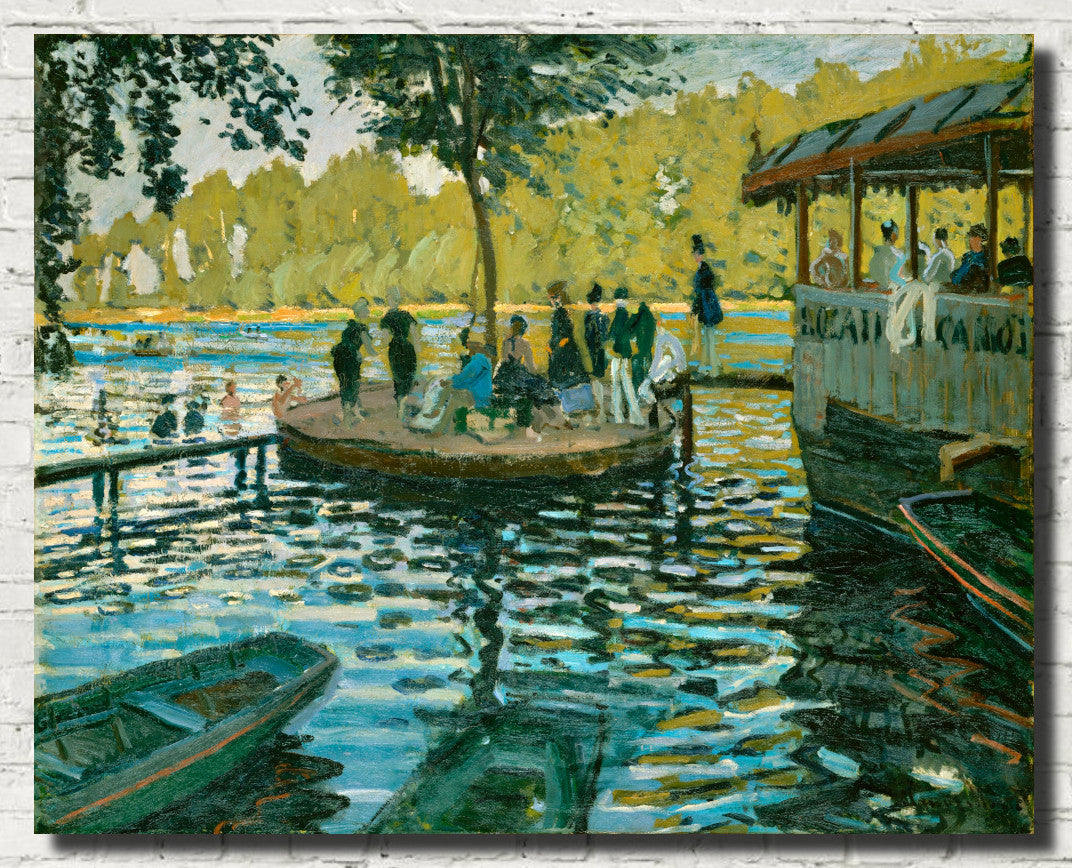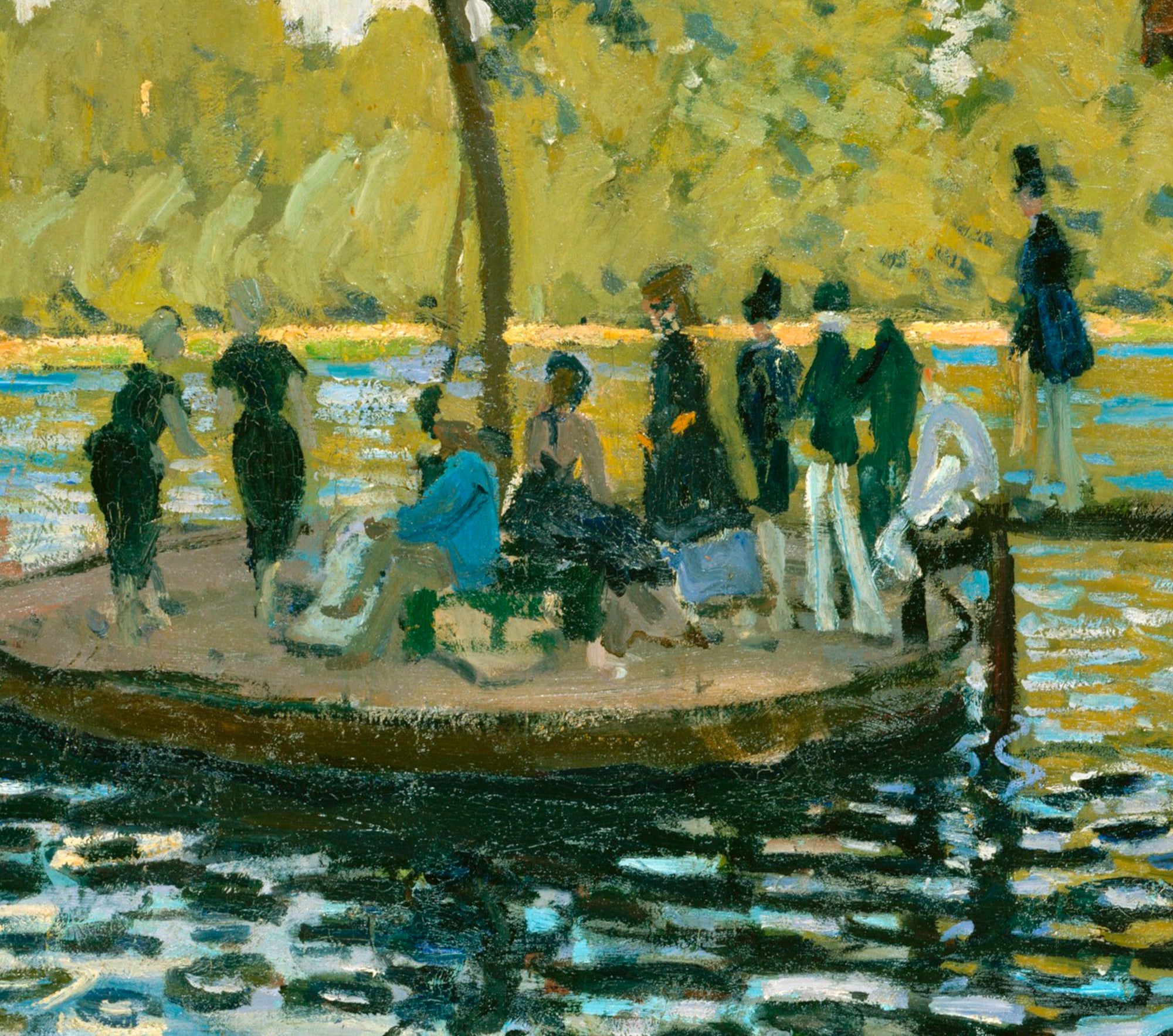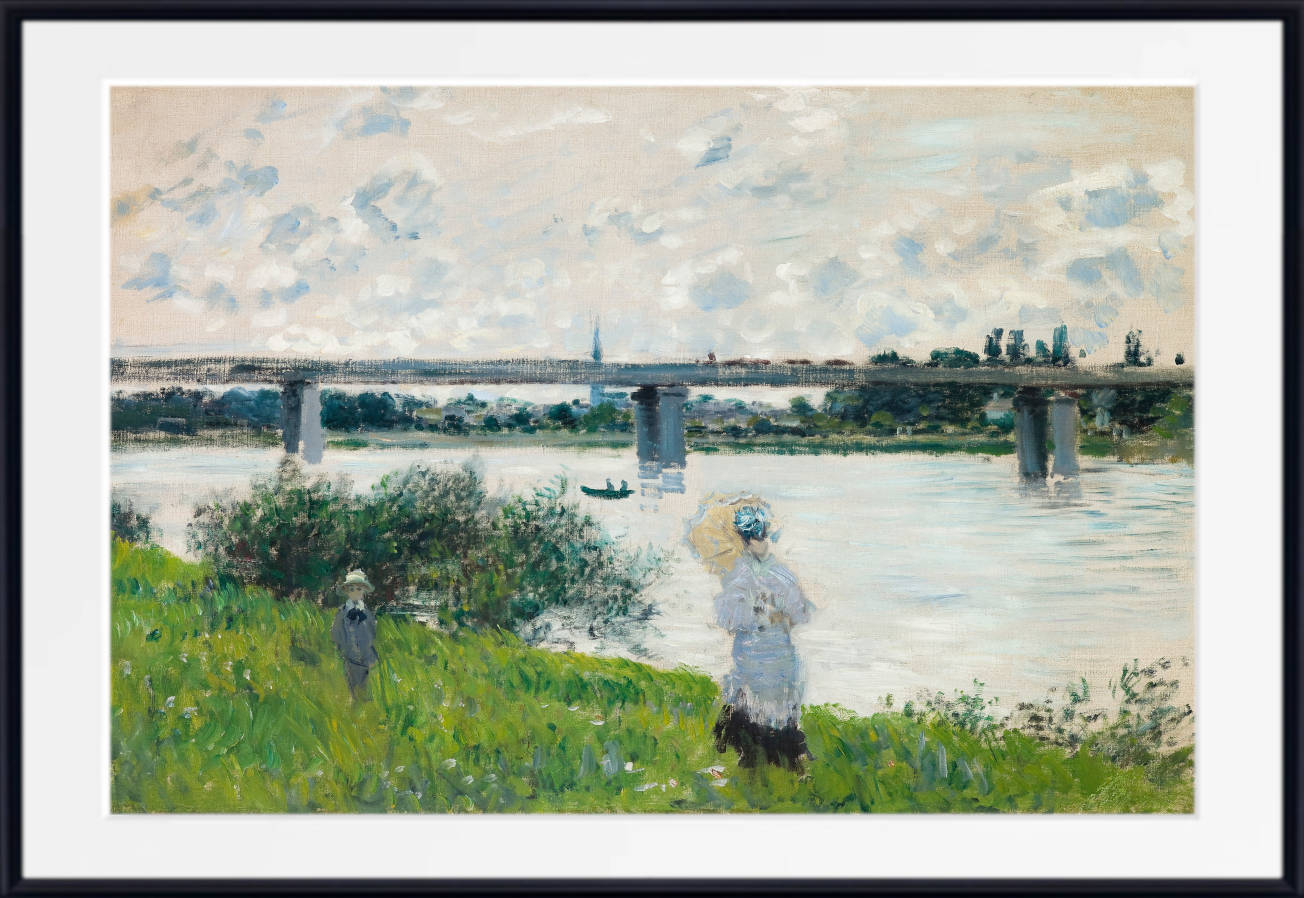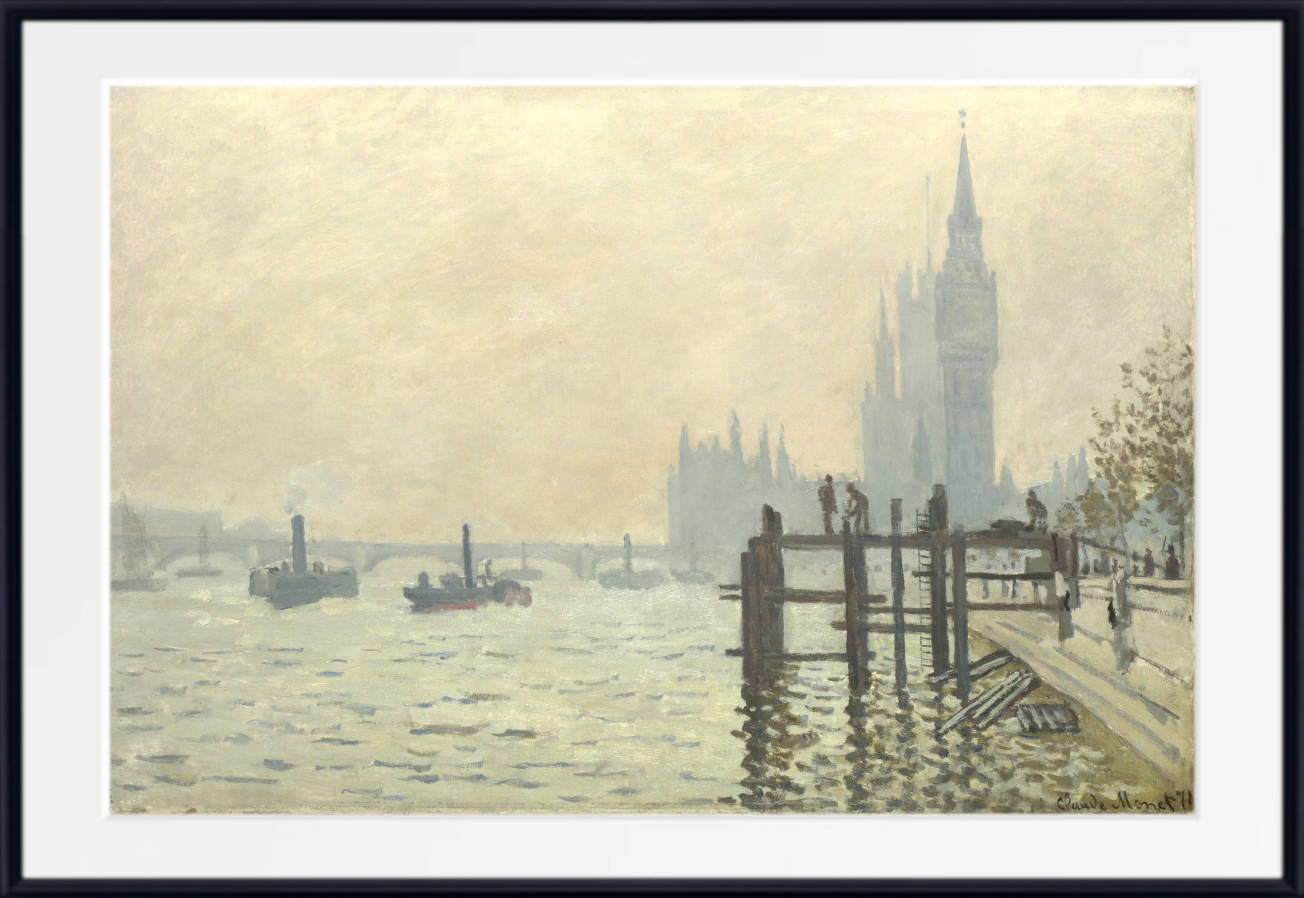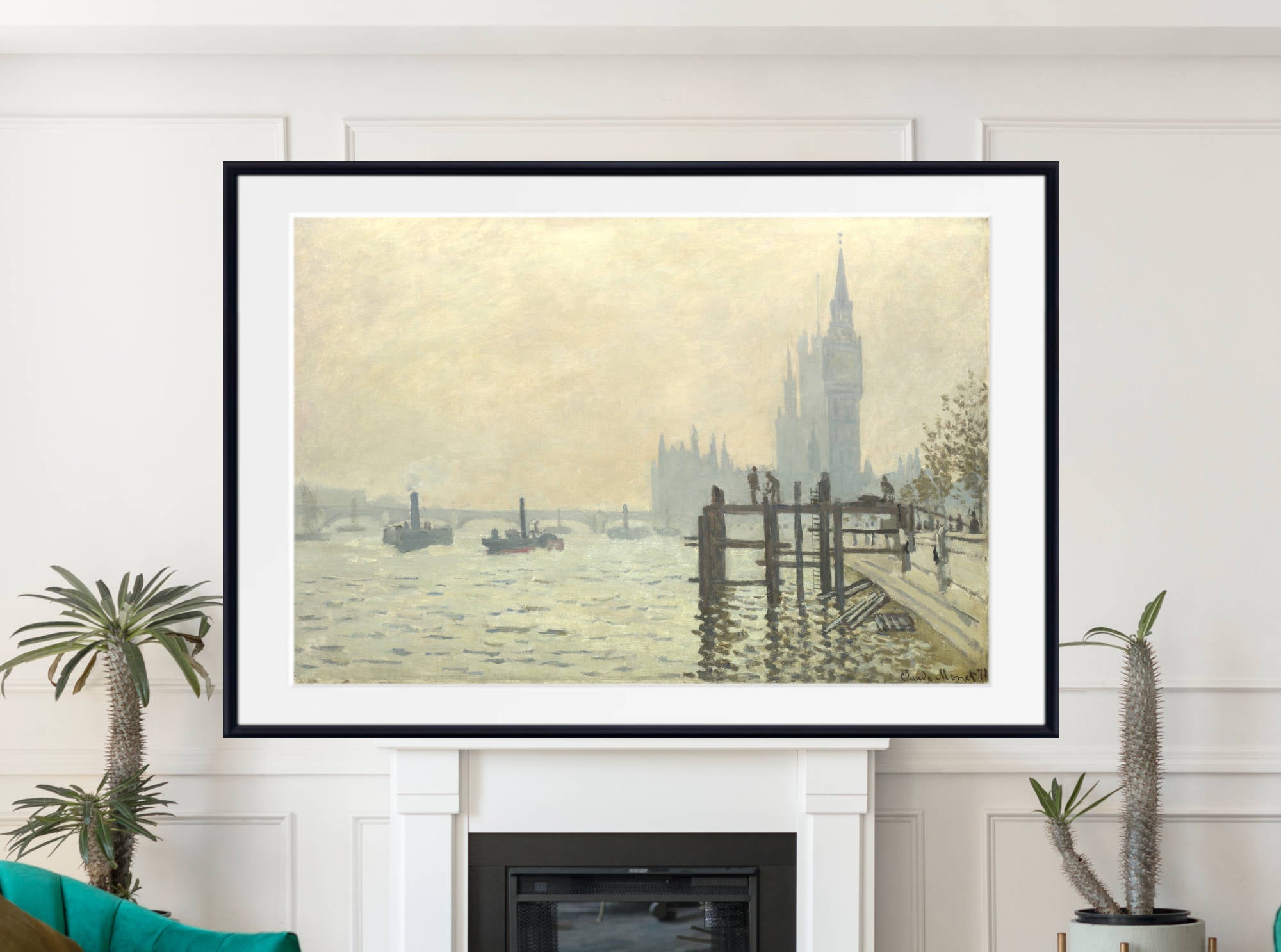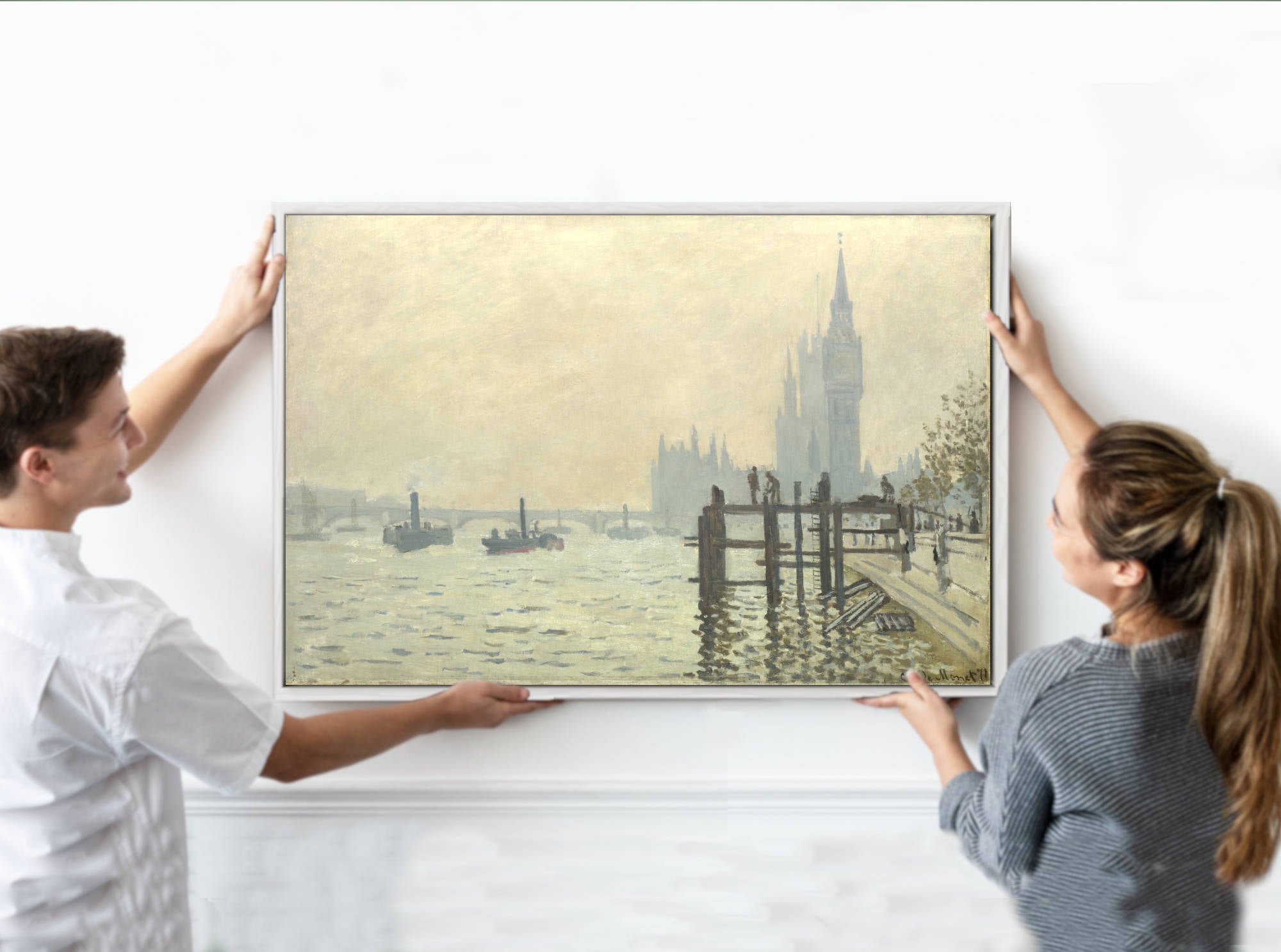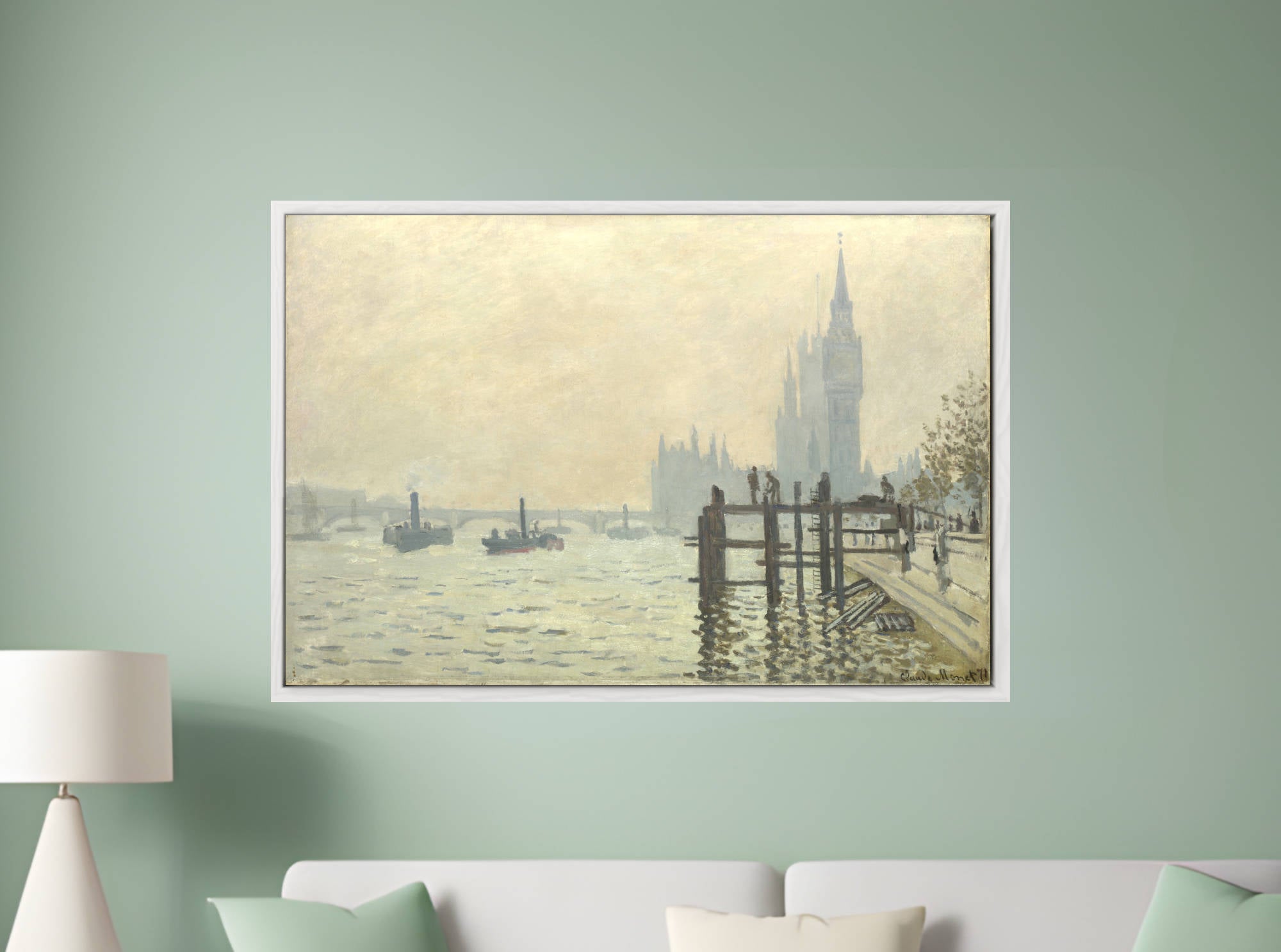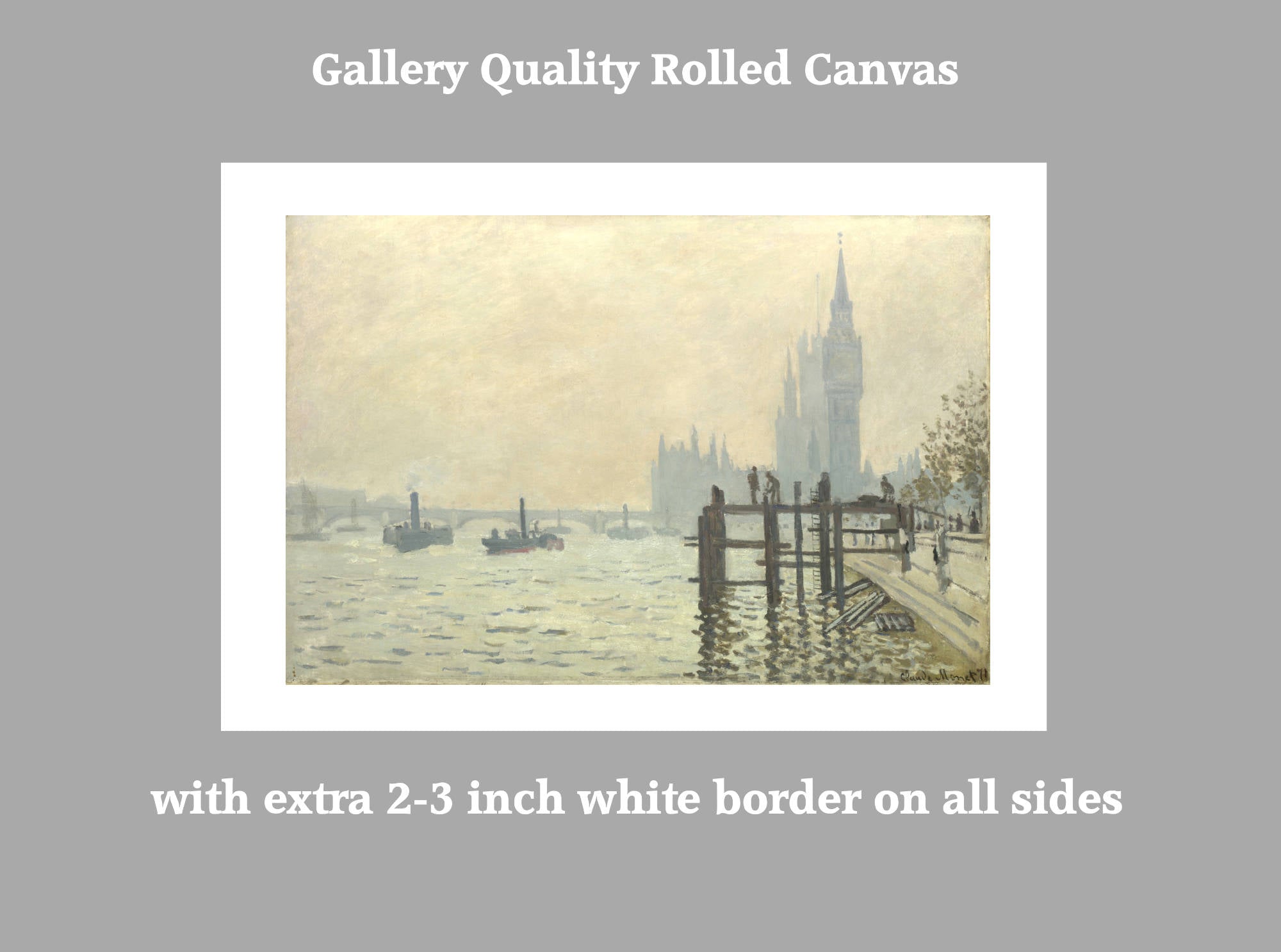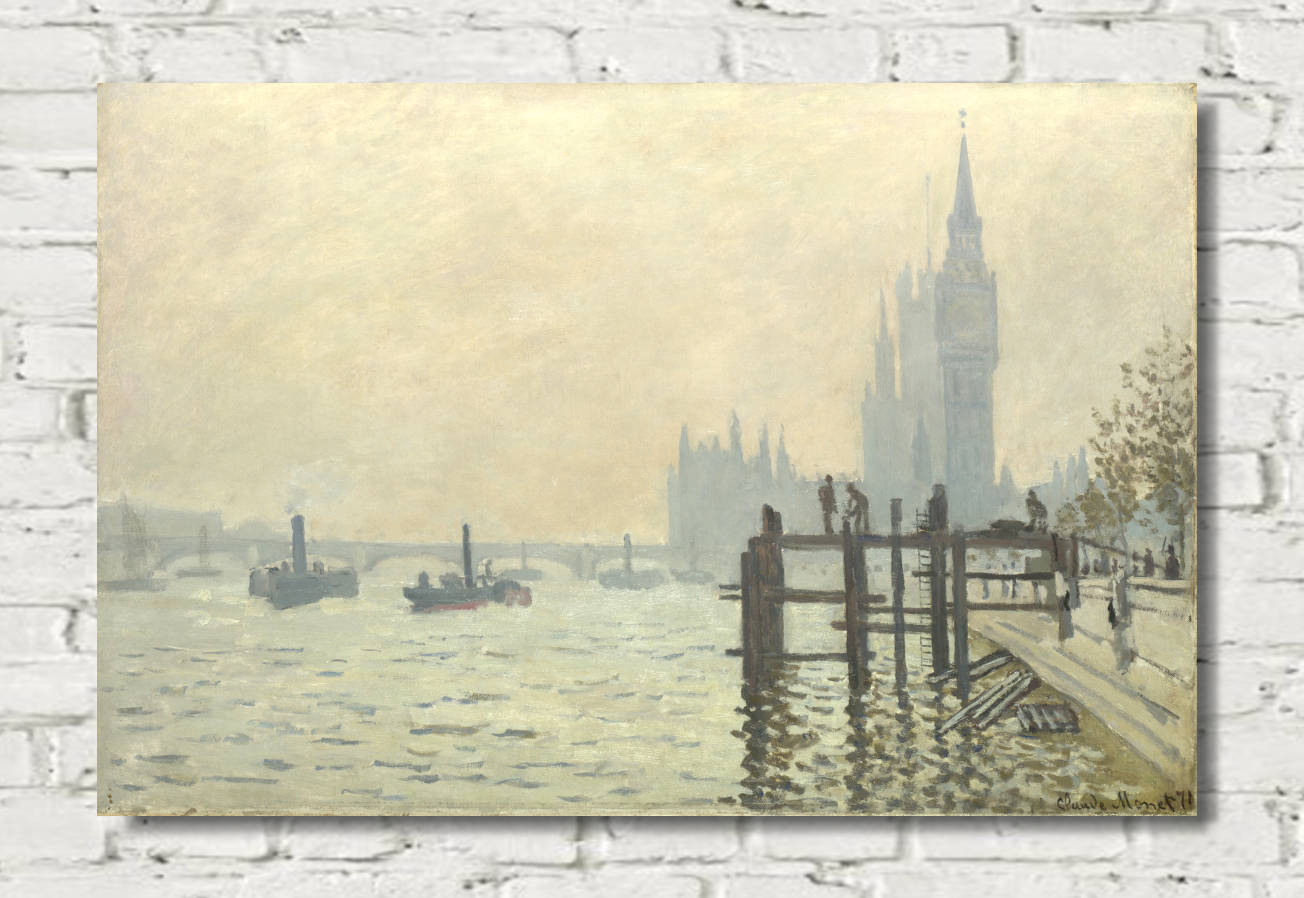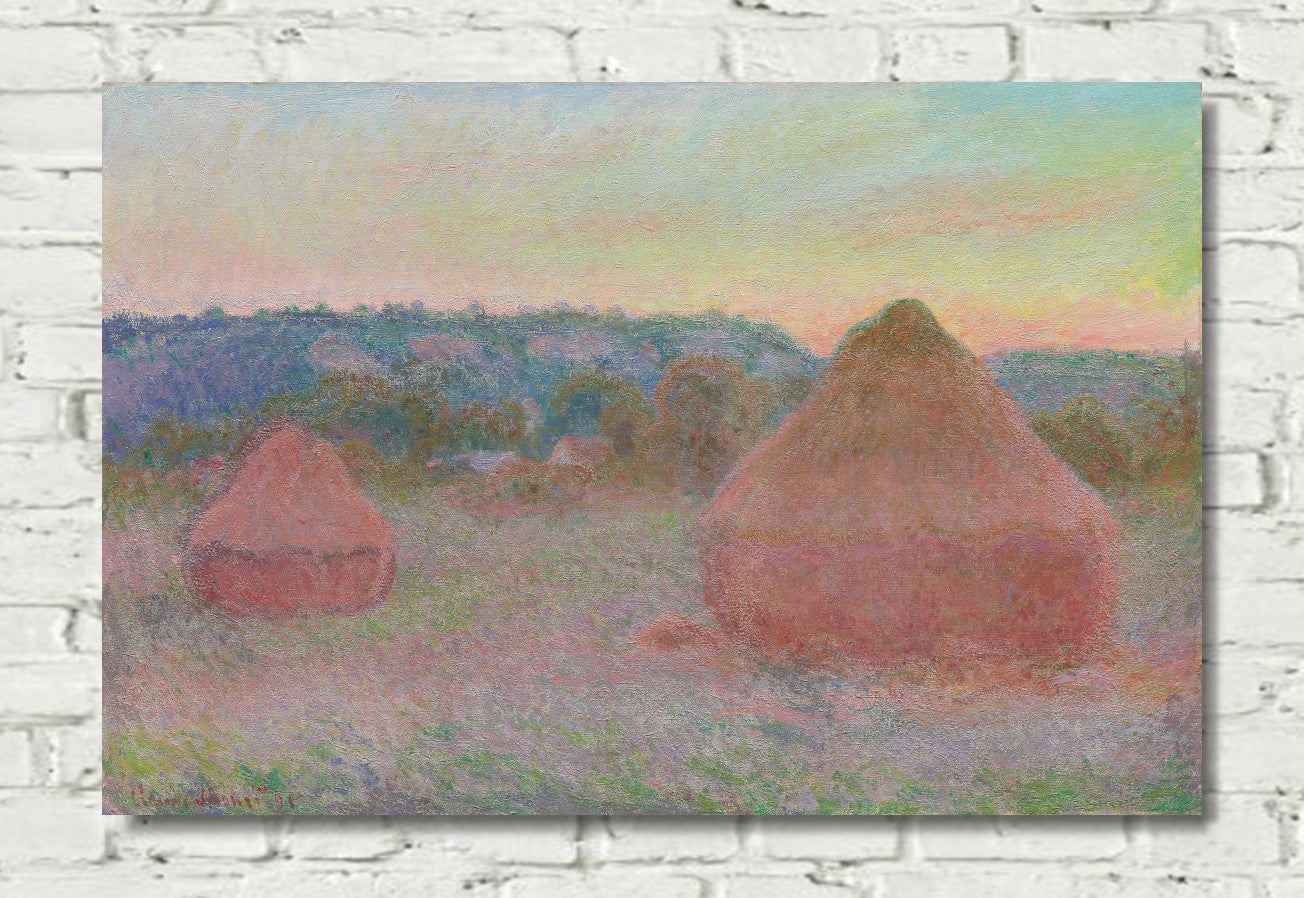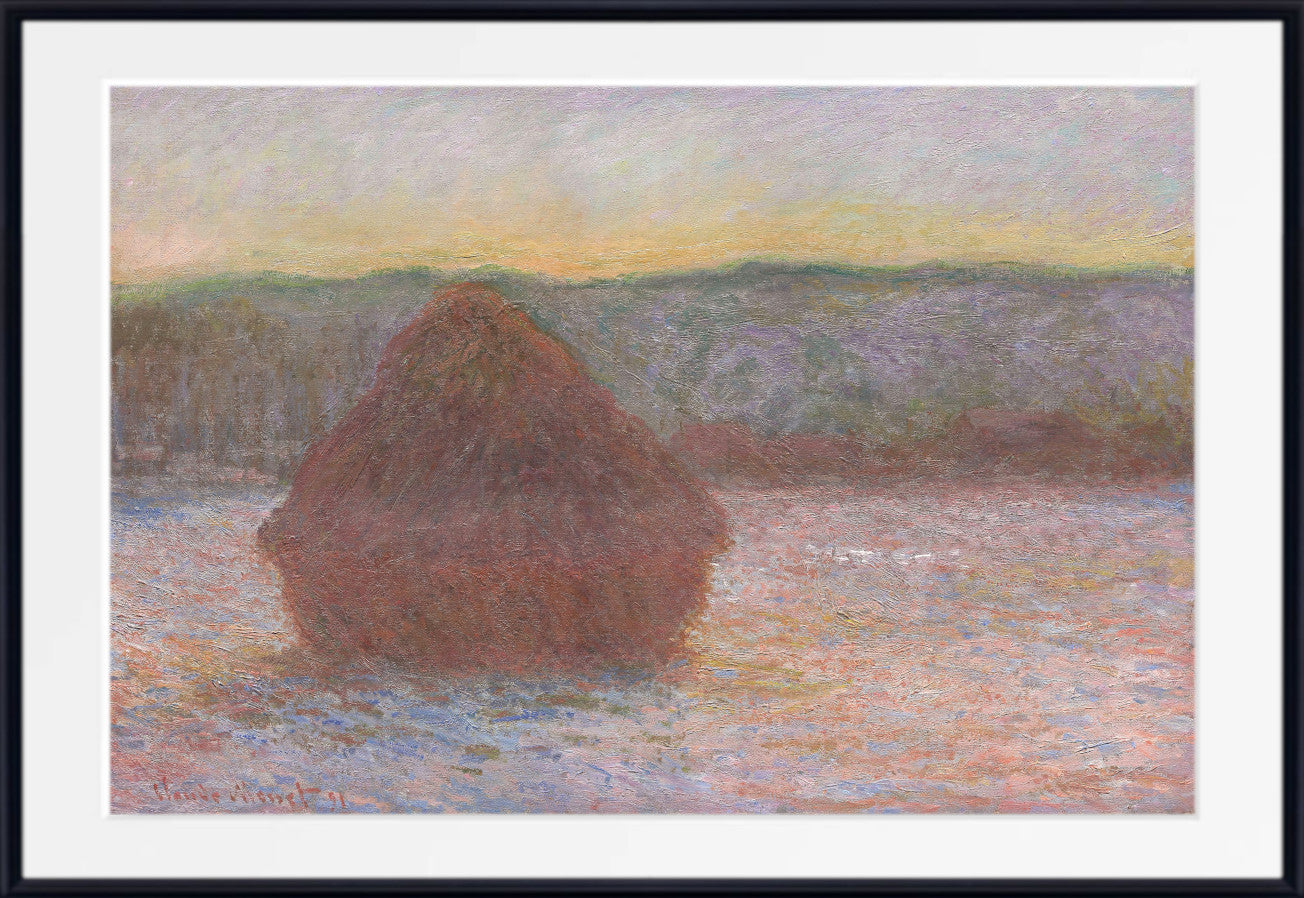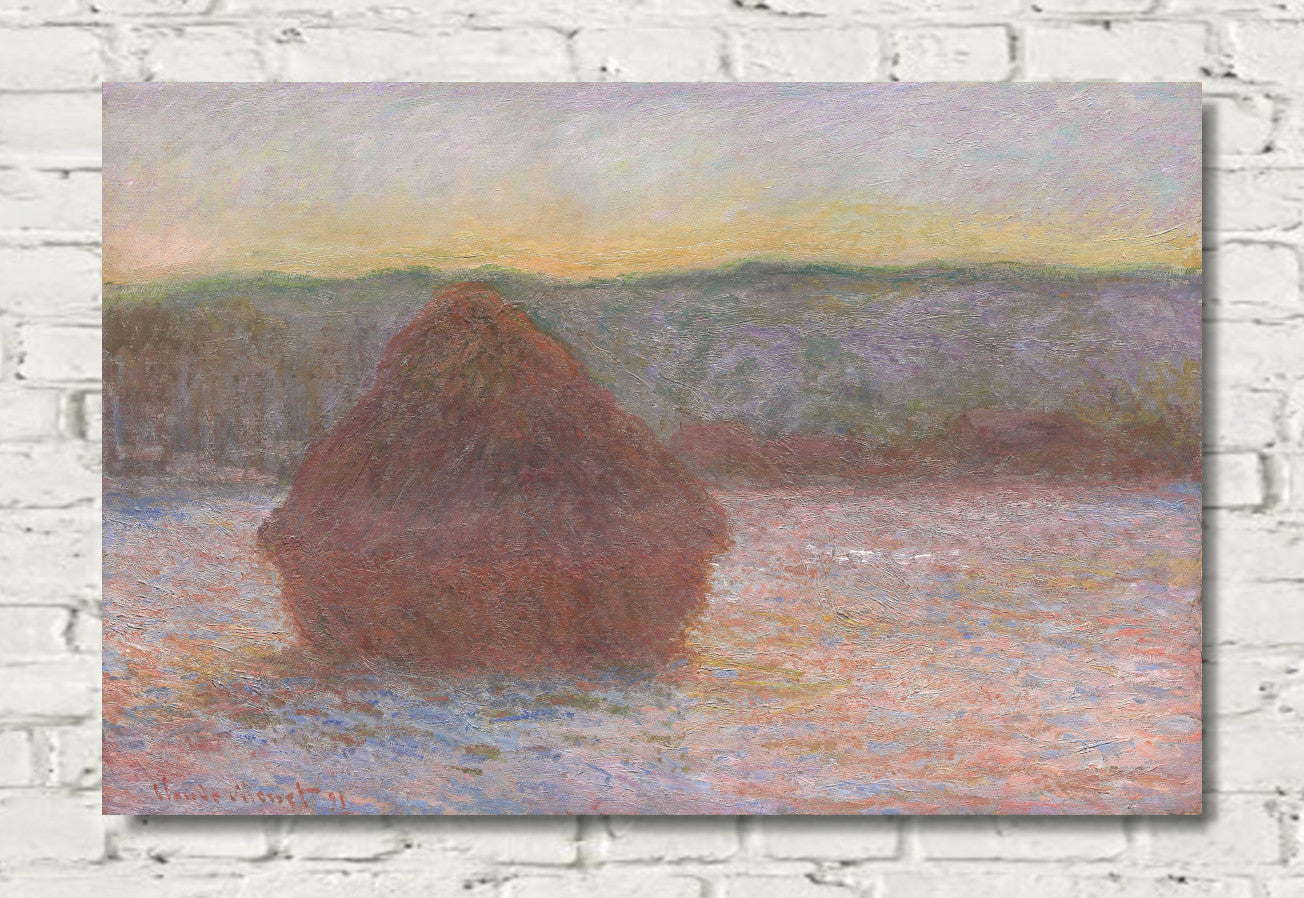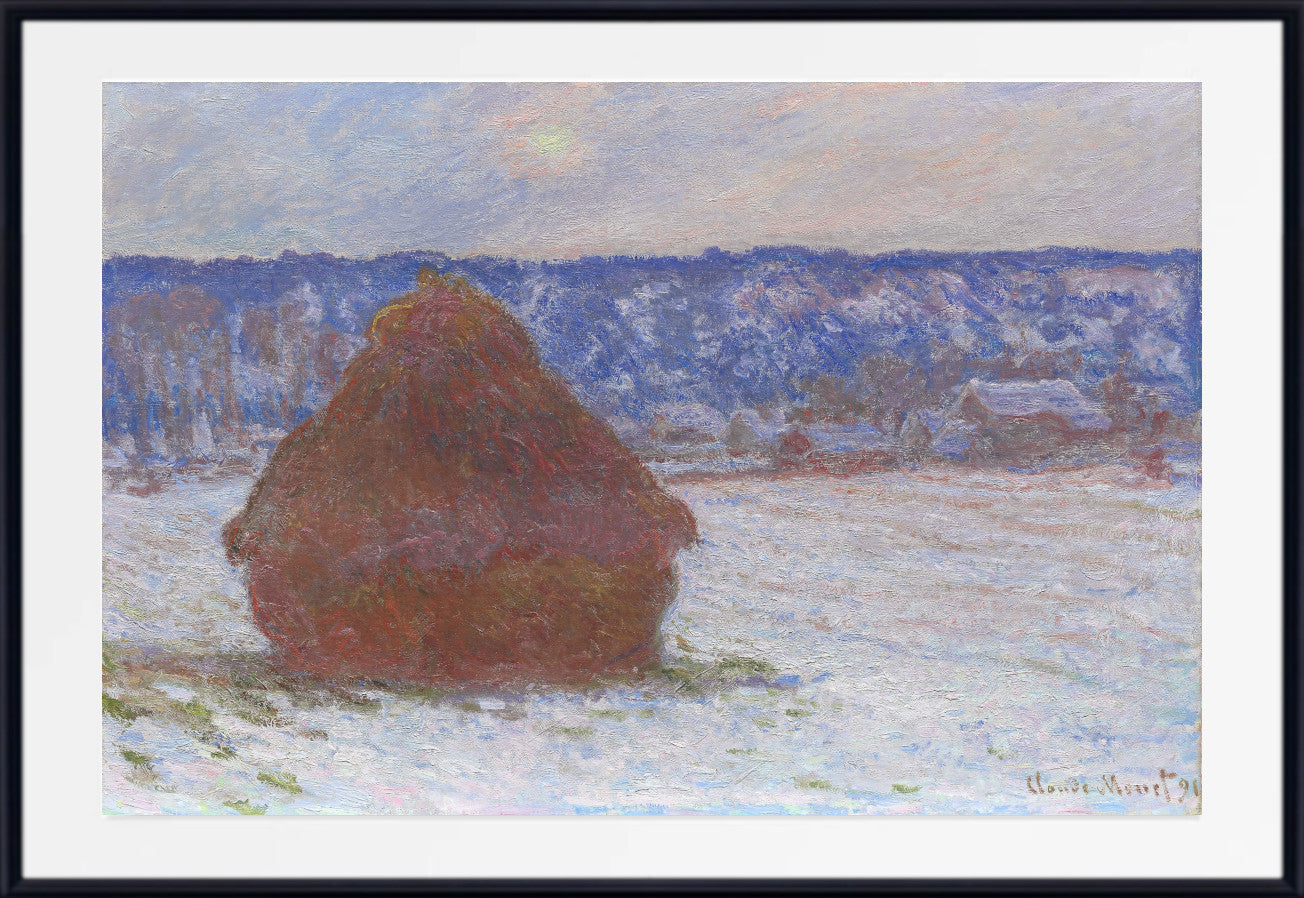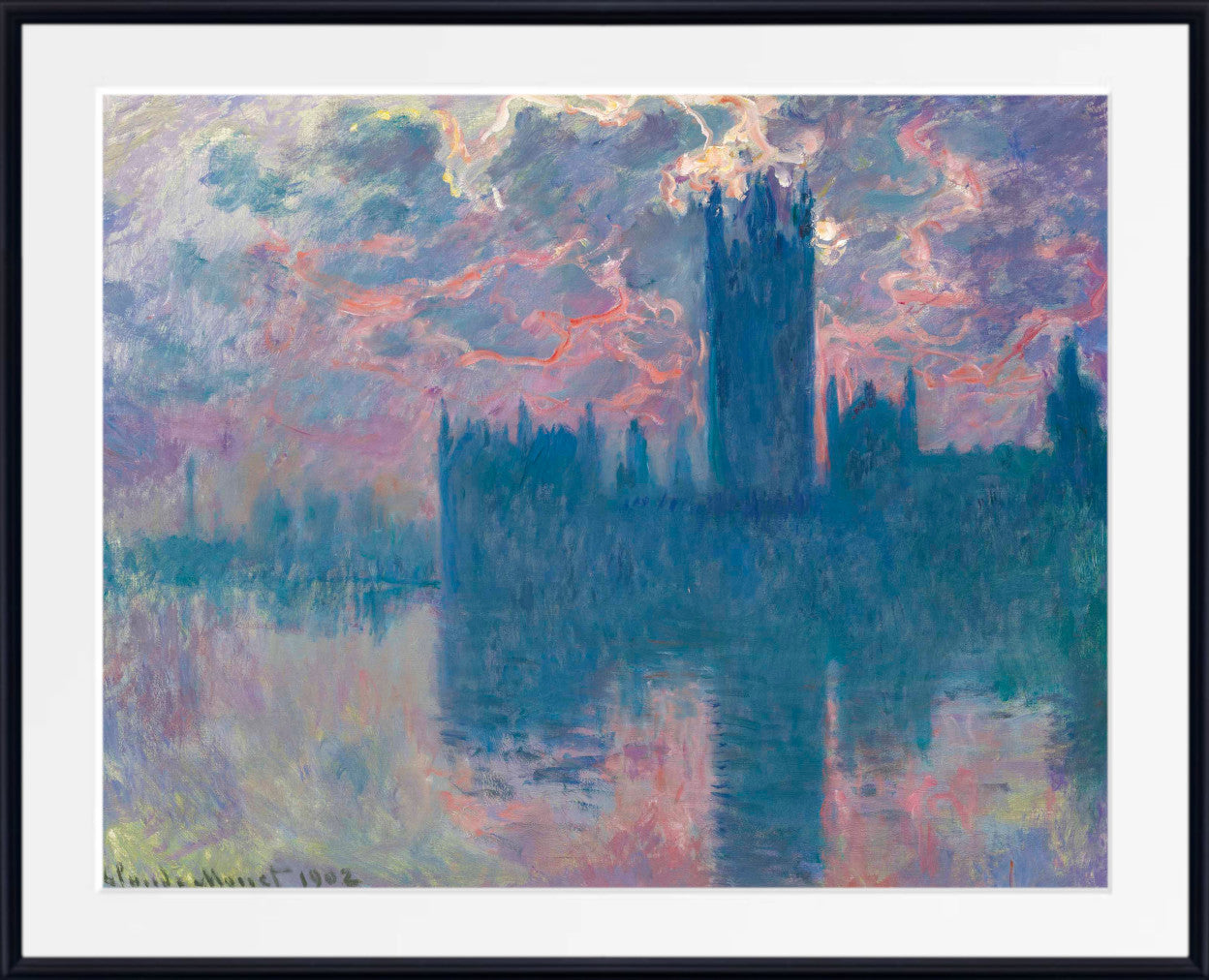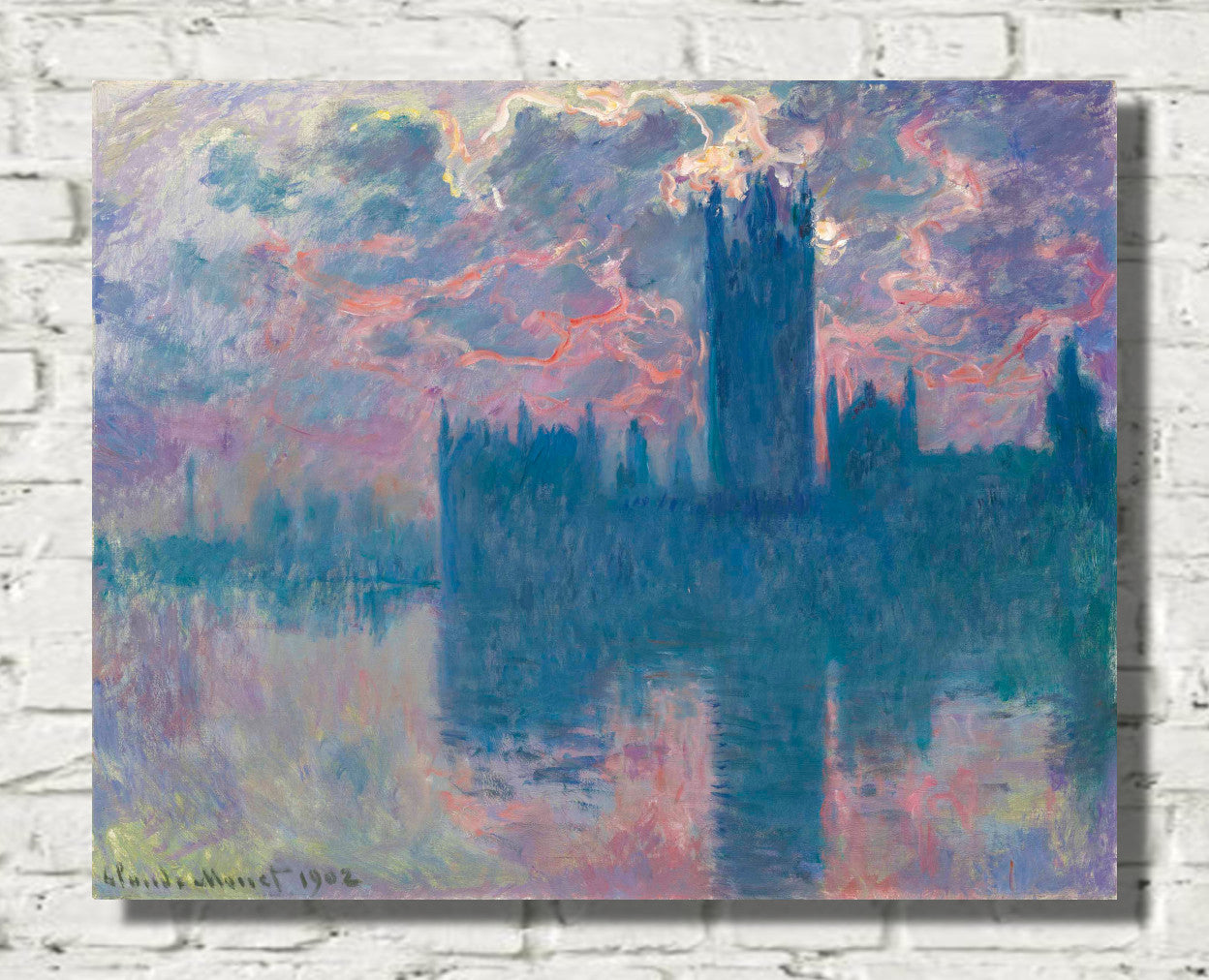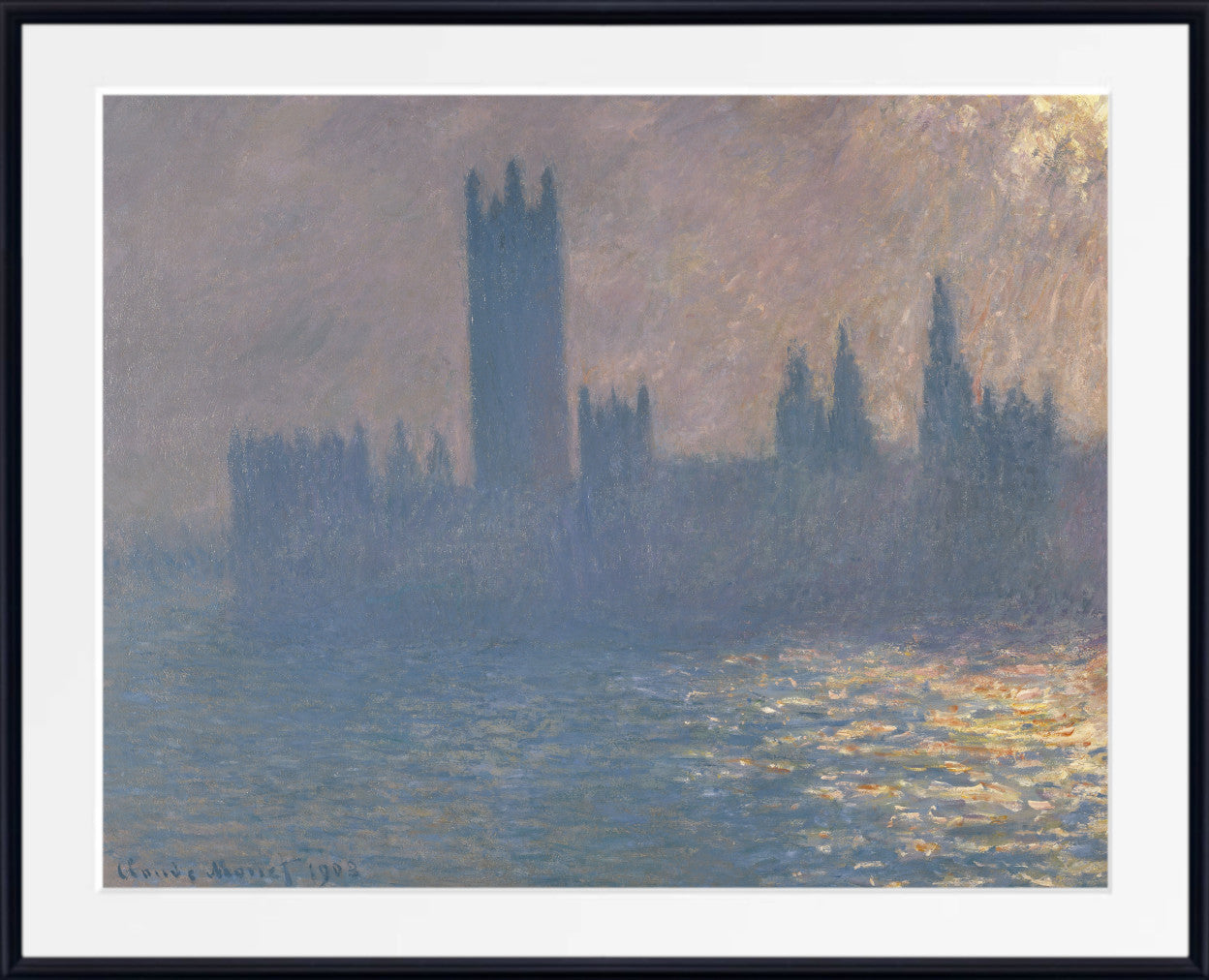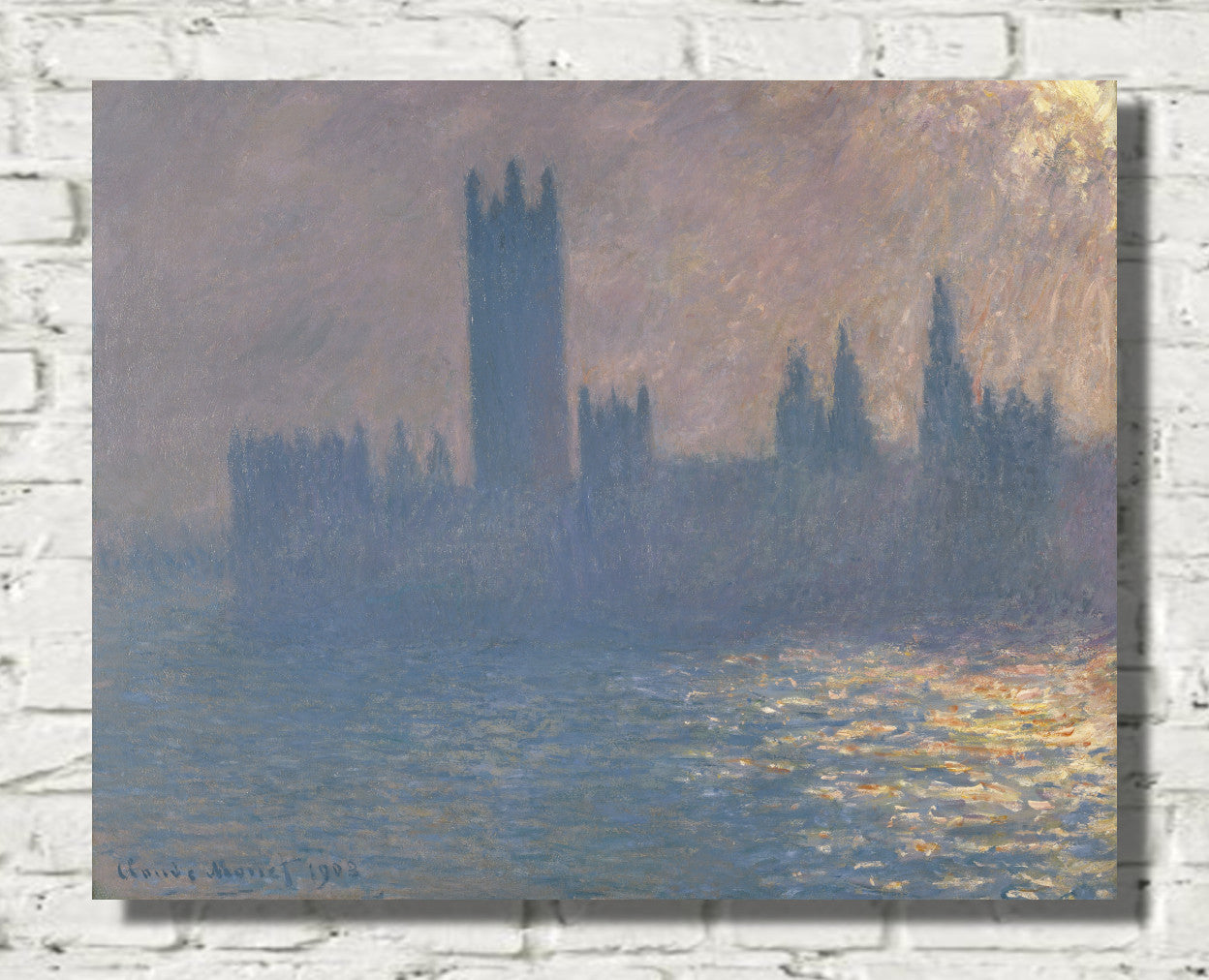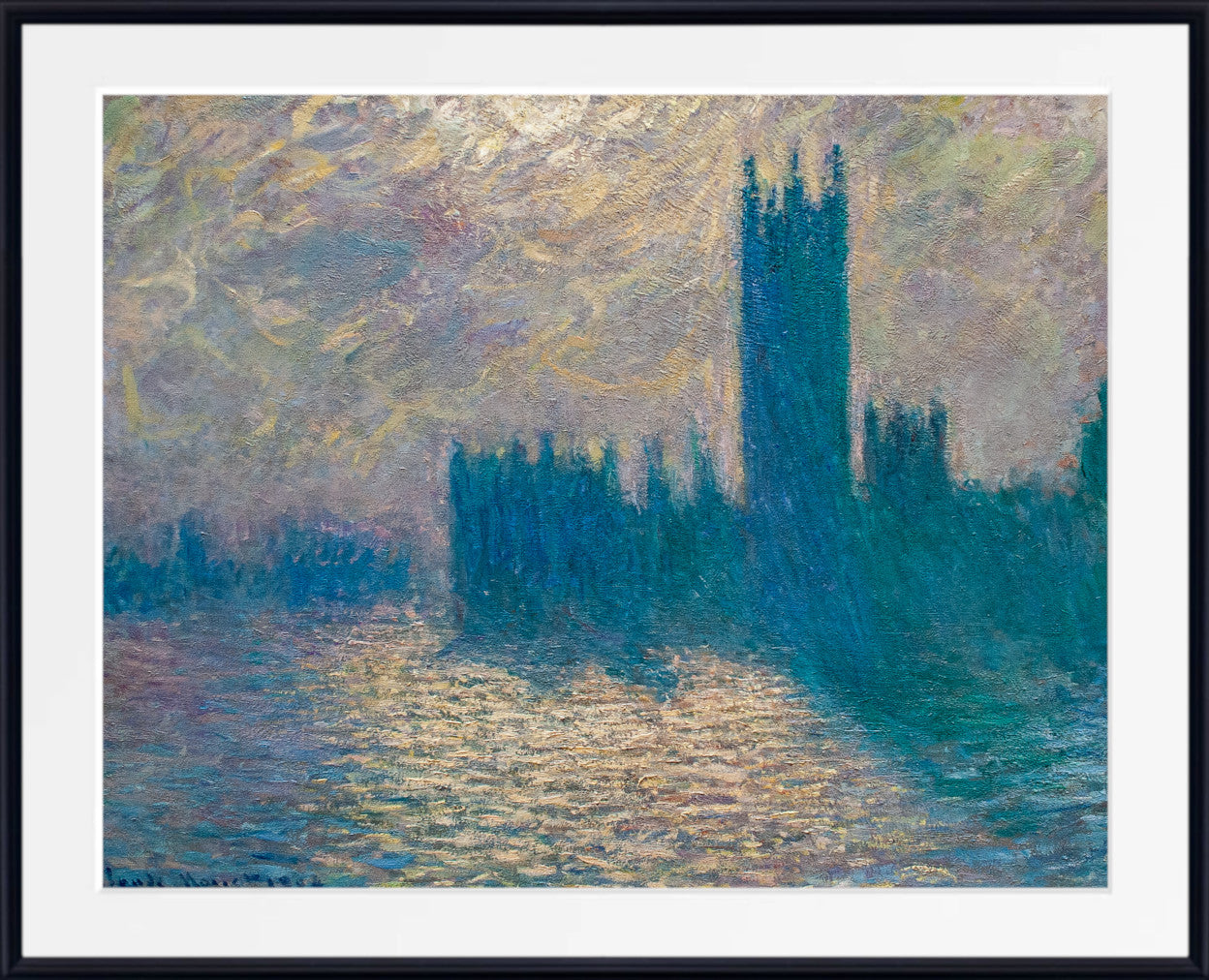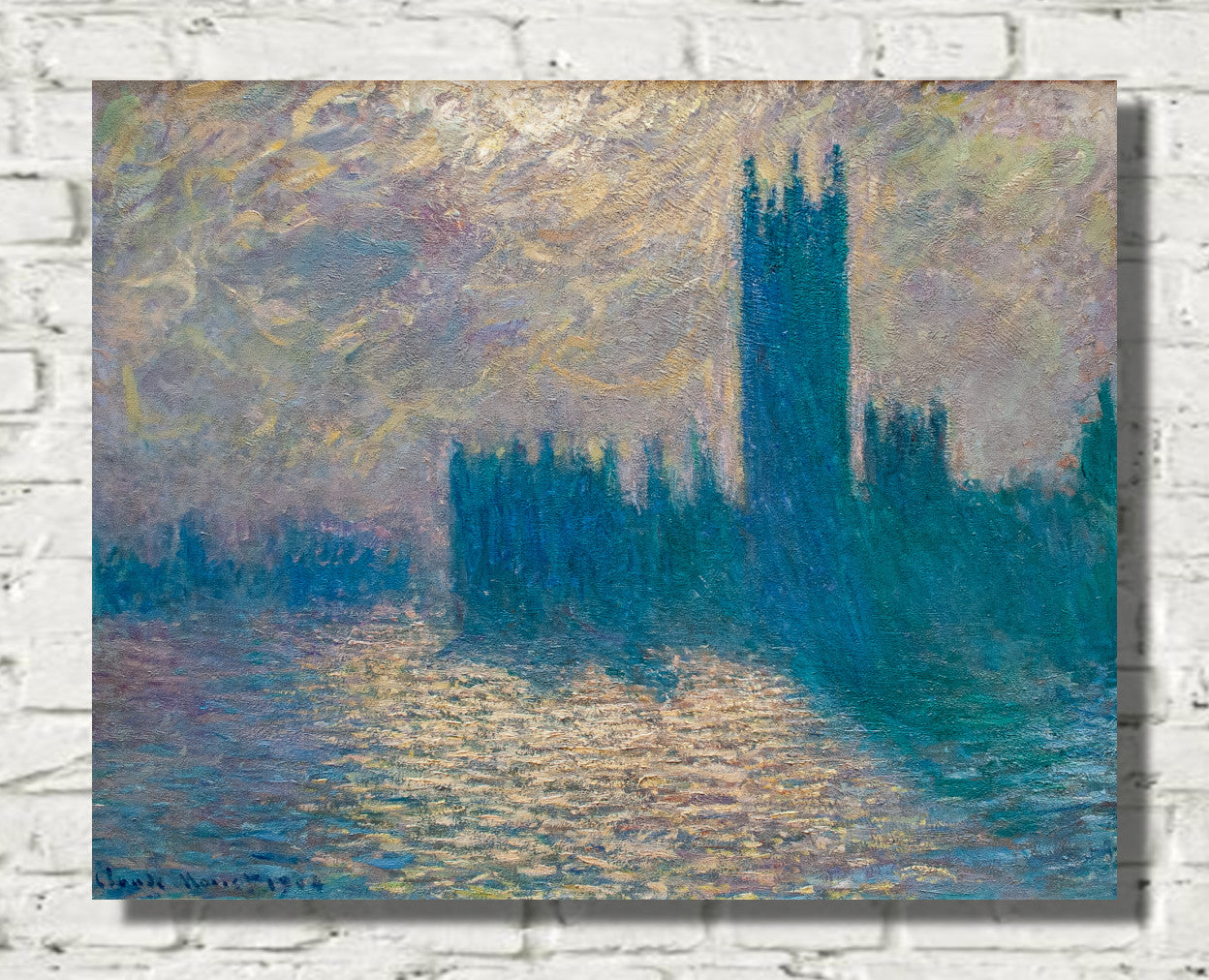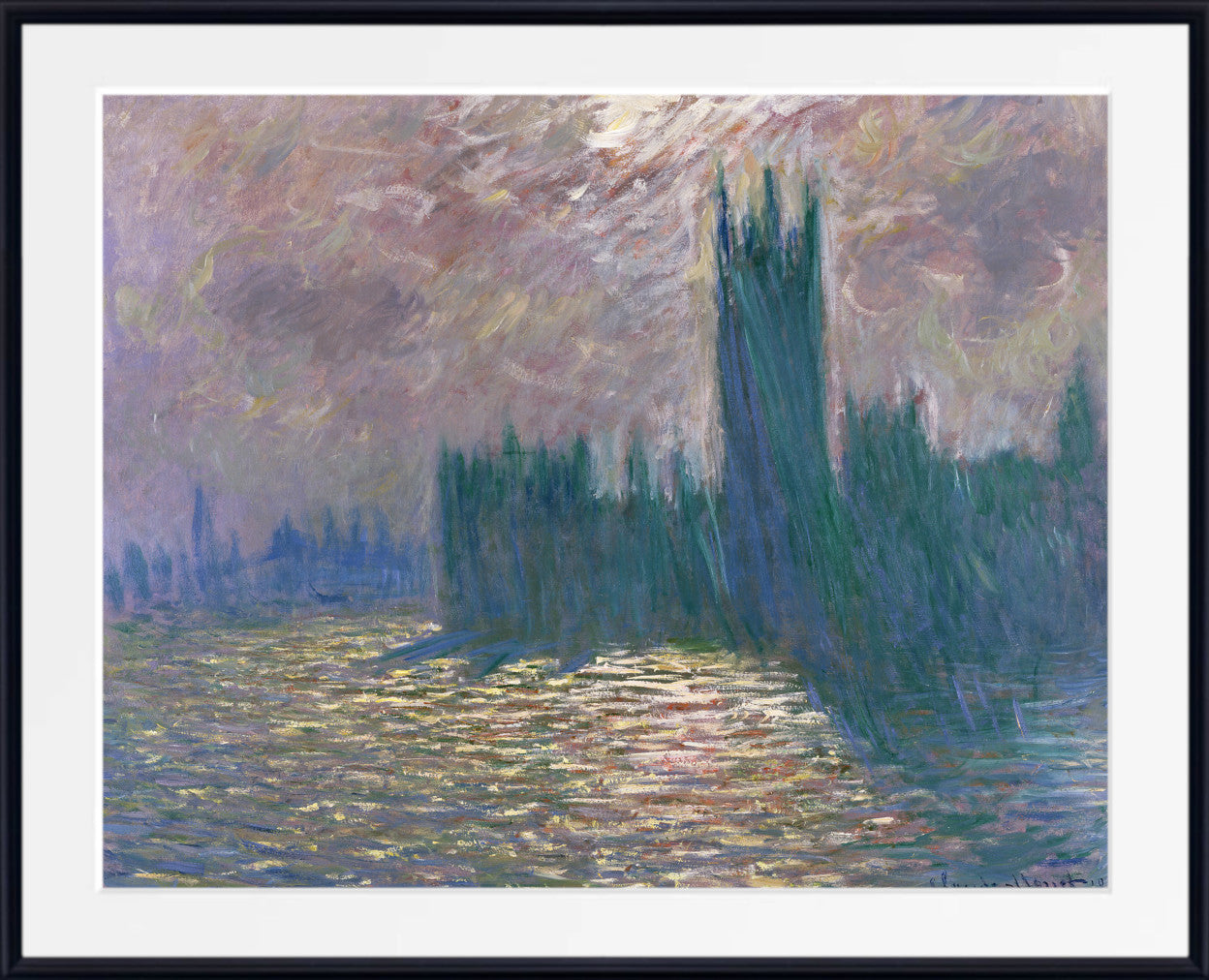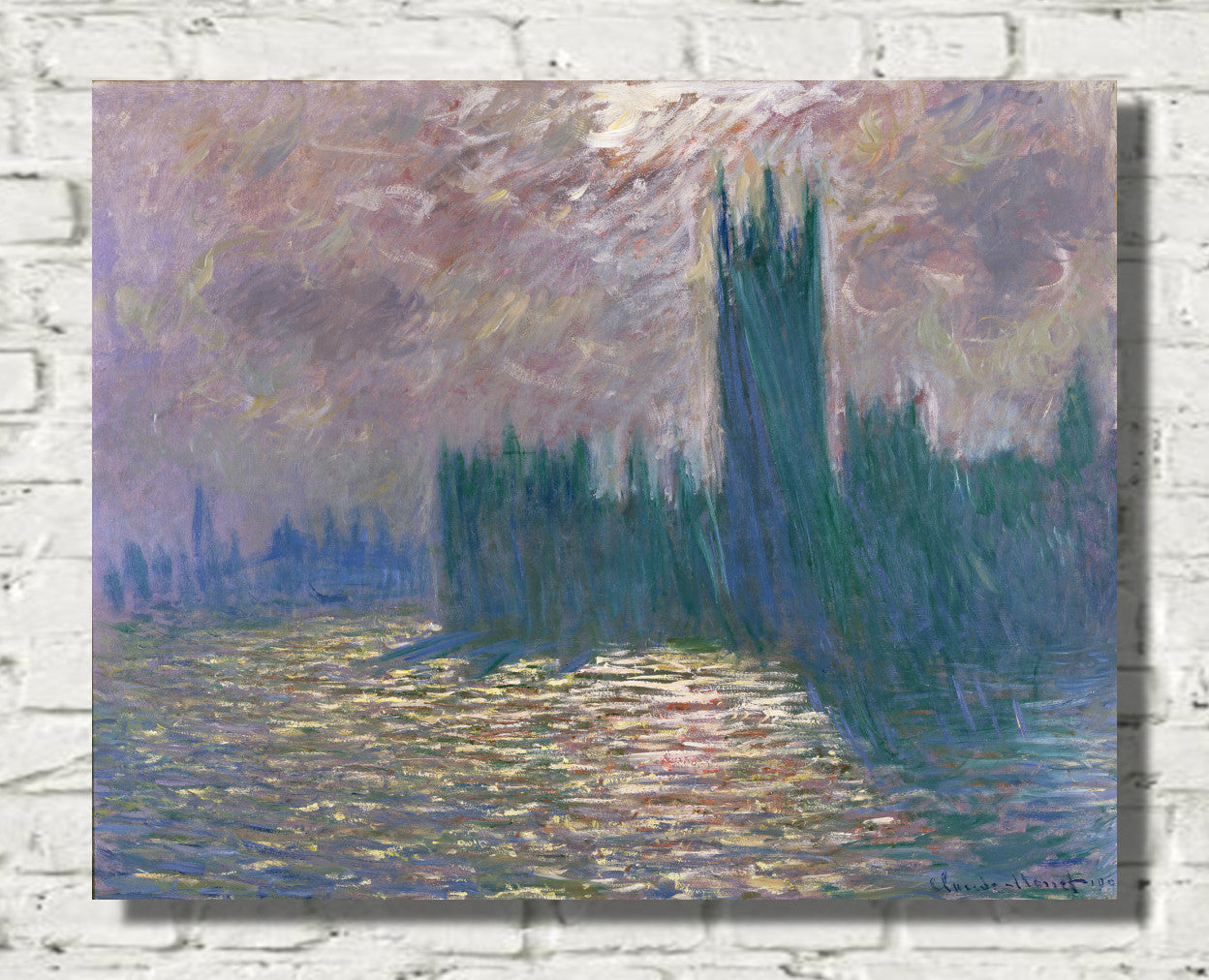Sunrise, Claude Monet (1872)
Claude Monet was the leader of the French Impressionist movement, literally giving the movement its name. As an inspirational talent and personality, he was crucial in bringing its adherents together. Interested in painting in the open air and capturing natural light, Monet would later bring the technique to one of its most famous pinnacles with his series paintings, in which his observations of the same subject, viewed at various times of the day, were captured in numerous sequences. Masterful as a colorist and as a painter of light and atmosphere, his later work often achieved a remarkable degree of abstraction, and this has recommended him to subsequent generations of abstract painters.

Monet Early Years - Based in Realism
When Claude Monet was 11, he attended an art-focused secondary school in his hometown of Le Havre, taking beginning drawing classes from Jacques-Francois Ochard. A few years later, Monet studied the art of the landscape from a local painter, Eugene Boudin, who also acclimated the young artist to paint in the open air so as to capture nature in the moment. Under the informal tutelage of the landscape master, Johan Jongkind, the two men became adept in the genre. One of the first Monet paintings, completed in 1858, was a realistic landscape entitled View at Rouelles, Le Havre, a lifelike sylvan scene which, at first glance, bears little resemblance to his later works. The artist's early efforts pay homage to the Realist school of art that came to dominance during his childhood. Reacting against Romanticism, Realistic artists such as Gustave Courbet focused on accuracy in depicting their subject matter, which often consisted of working-class figures and unembellished, natural scenery.
During this period from his late teens to early 20s, Claude Monet spent time in the Louvre in Paris, where he met contemporary painters, such as Edouard Manet, who would later become colleagues. While other artists sought to improve their techniques by copying the masterworks on display in the Louvre, Monet preferred sketching what he could see out the window of the revered art museum.
Claude Monet was drafted in 1861 into Les Chasseurs d'Afrique, a light cavalry unit headed for Algeria. During his year-long tour of duty, he had only a few opportunities to paint, producing just one landscape, a few sketches and some military portraits. While none of these survived his service, he would call upon his memories of the unique quality of light in Algiers when creating future works.
Upon leaving the foreign service in 1862, Claude Monet returned to Paris to join the private studio of Charles Gleyre, a painter of historical art. He shared studio space with Pierre-Auguste Renoir, Frederique Bazille and Alfred Sisley, all of whom would later determine the future direction of art. The students would often take their easels and paints to outdoor settings and transfer their immediate impressions of the landscape onto the canvas with short, deft brushstrokes. During his tutelage at the Gleyre studio, Claude Monet painted Woman in a Green Dress, a life-sized portrait of his future wife Camille, and Women in a Garden, for which Camille also modeled. The former painting was accepted for exhibit at the prestigious Paris Salon. The work was primarily in the Realist style, lacking the blends of bright colors and the immediacy that would define his later works.
Monet Mid Life- Dawn of Impresionism
To escape the Franco-Prussian War in 1870, Monet took refuge in London, producing many scenes such as Westminster Bridge (1871). His wife and their new baby boy Jean joined him. He visited London museums and saw the works of John Constable and J.M.W. Turner, whose romantic naturalism clearly influenced his use of light. Most importantly, he met Paul Durand-Ruel, who ran a new modern art gallery on Bond Street. Durand-Ruel became a major supporter of Monet and Pissarro, and later Renoir, Degas, and other French Impressionists. Returning to France after the war, Monet settled his family in Argenteuil, a suburb of Paris along the Seine River. Over the next six years he developed his style and documented the changes in the growing town in over 150 canvases. His presence also attracted Parisian friends including Renoir and Manet. While Manet was 10 years older and became an established artist much earlier than Monet, by the 1870s each influenced the other in significant ways, and Monet had successfully won Manet over to plein air painting by 1874. In a continued effort to protest the salon system, Monet and his friends organized their own exhibition in 1874, held in the vacated studio of photographer and caricaturist Nadar. This became known as the first Impressionist exhibition. These artists, including Renoir, Degas, and Pissarro, were the first artists to collectively respond to the changes in their city. The modernization of Paris was evident in the wider boulevards needed to accommodate the expanding fashions of public life and growing traffic of consumerism. Not only was their subject matter new, but the way they portrayed this reality was unique as well. Intuitive feeling and the essence of spontaneity, of the moment, were impressed upon the canvas. It was through the 1873 work Impression, Sunrise that Monet inadvertently gave the movement its name, although that name was actually initially used by writers to criticize these types of works.
While Monet's upbringing was rather middle class, his extravagant tastes led him to live much of his life in varying degrees of poverty and debt. His paintings were not a decent source of income and he often had to borrow money from his friends. After receiving several commissions throughout the 1870s, Monet enjoyed some financial success, but was in dire straits by the end of the decade.
In 1877, the Monet family was living in the town of Vetheuil with Alice Hoschede and her six children. The Hoschede family were great friends and patrons of Monet's work, but the husband's business went bankrupt, and he ended up abandoning his family. Thus, Monet had to find an inexpensive house for the large household. Camille gave birth to their second son, Michel in 1878. But when Camille died about a year and a half later, there was a change in Monet's work, focusing more on the flux of experiential time and the mediating effects of atmosphere and personality on subject matter. Alice continued living with Monet, and she became his second wife in 1892 (after Ernest Hoschede passed away).
Claude Monet, Rouen Cathedral in a modern living room
In 1883, Monet was looking for a house for Alice and their (combined) eight children. He happened on a property in a sleepy town called Giverny, that had a total of 300 inhabitants. He fell in love with a house and garden that he as able to rent, and later buy (and greatly expand) in 1890. The property at Giverny was Monet's primary inspiration for the last three decades of his life. He created a Japanese garden for contemplation and relaxation, making a pond filled with water lilies with an arched bridge. He famously said: "My garden is my most beautiful masterpiece. I work at my garden all the time and with love. What I need most are flowers. Always. My heart is forever in Giverny, perhaps I owe it to the flowers that I became a painter." It was at Giverny that Monet found his ultimate success. His paintings began to sell in the United States, England, and locally. He became quite the gentleman employing a large staff in his house, including six gardeners that maintained his beloved garden and lily pond. Monet was less concerned with modernity in his works and more with atmosphere and environment. His series of grainstacks, painted at different times throughout the day, received critical acclaim from opinion-makers, buyers, and the public when exhibited at Durand-Ruel's gallery. He then turned his sights to Rouen Cathedral, making similar studies of the effects of changing mood, light, and atmosphere on its facade at different times of the day. The results were dozens of canvases of brilliant, slightly exaggerated colors that formed a visual record of accumulated perceptions.
Monet - Later Years
Ultimately, Monet preferred to be alone with nature, creating his paintings rather than participating in theoretical or critical battles within the artistic and cultural scene of Paris. Whereas he traveled throughout the 1880s and 1890 to places like London, Venice, Norway, and around France - in 1908 he settled for the remainder of his life in Giverny. The year 1911 saw the death of his second wife Alice, followed by the passing on of his son Jean. Shattered by these deaths, the ragings of the First World War, and even a cataract forming over one of his eyes, Monet essentially ceased to paint. At the time, the French statesman Georges Clemenceau who happened to also be Monet's friend asked Monet to create an artwork that would lift the country out of the gloom of the Great War. At first, Monet said he was too old and not up to the task, but eventually Clemenceau lifted him out of his mourning by encouraging him to create a glorious artwork - what Monet called "the great decoration". Monet conceived a continuous sequence of waterscapes situated in an oval salon as a world within a world. A new studio with a glass wall facing the garden was built for this purpose, and despite having cataracts (one of which he had surgically removed), Monet was able to move a portable easel around to different places within the studio to capture the ever-changing light and perspective of his water lilies. He continued to work on his water paintings right up until the end of his life. The Orangerie museum was ultimately built with two eliptical rooms constructed to house Monet's water lilies. The all-over compositions of the canvases and the designed rooms allowed the viewer to feel as if they were within the water surrounded by the foliage. The ultimate installation was loved by many critics, and was most famously proclaimed "the Sistine Chapel of Impressionism" by the Surrealist writer and artist Andre Masson.
The Legacy and Influence of Monet
Just like William Shakespeare on literature, and Sigmund Freud on psychology, Claude Monet's impact on modern art is tremendous. Monet was among the most influential artists of any era, and his unique color palette, vision and conformation would make a lasting impact on future fine art. Many artists have been influenced by Monet, whose techniques inspired Impressionists and Post-Impressionists such as Vincent van Gogh. In terms of form and scale, the artist's work directly influenced such Abstract Expressionists as Jackson Pollock and Mark Rothko. Popular artist Andy Warhol reflected the Monet influence in his multiple renditions of a single subject. Claude Monet also laid some of the groundwork for the Minimalist movement of the 1960s. Still extremely popular in his own right, Claude Monet continues to the present day to define both the public's appreciation of art and the perception of beauty in its purest form.










